- Grades 6-12
- School Leaders
NEW: Classroom Clean-Up/Set-Up Email Course! 🧽

260+ Field Trip Ideas for Grades Pre-K Through 12 (In-Person and Virtual)
Get out of the classroom and explore the world!
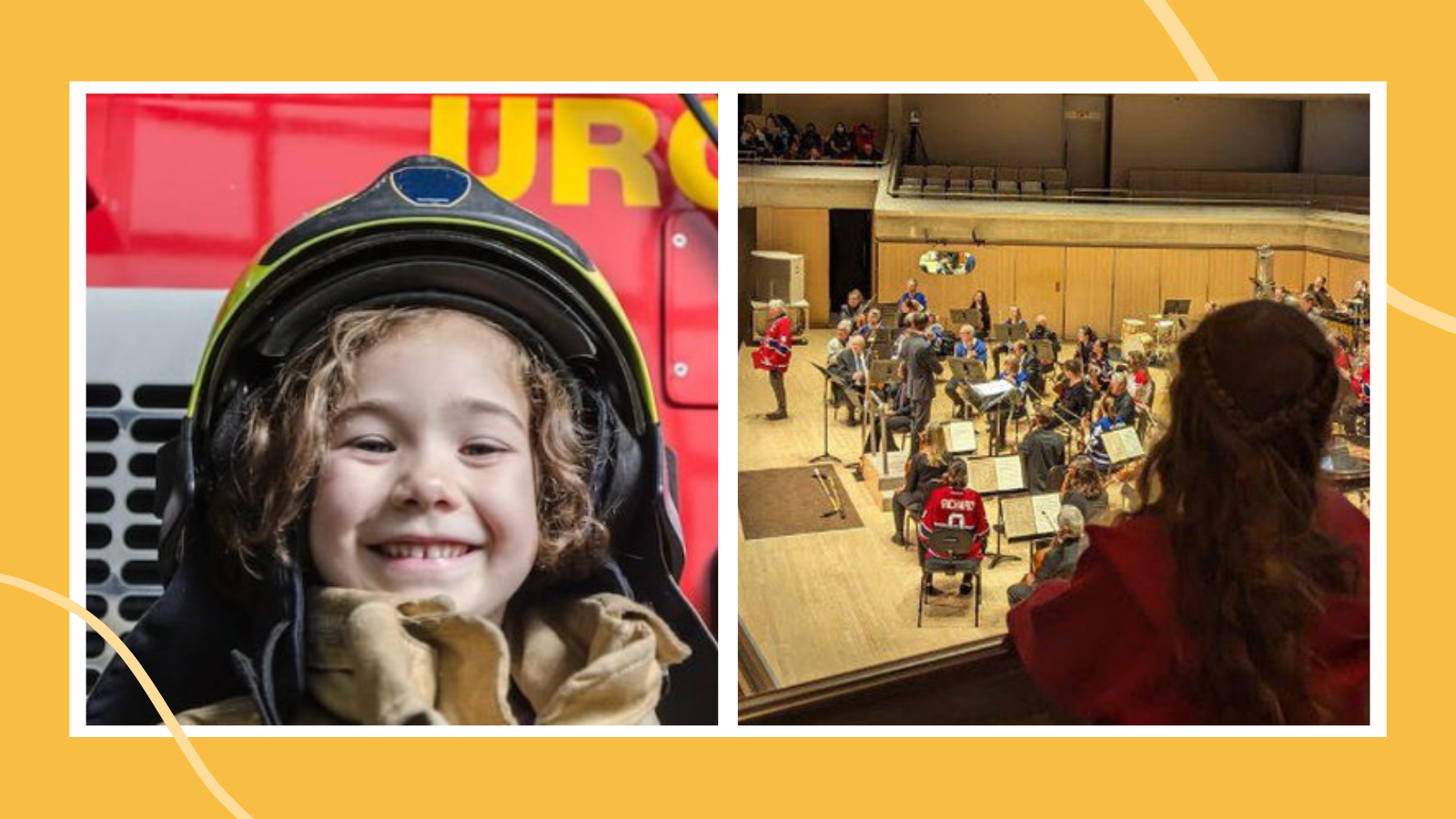
Field trips are a quintessential school experience. You usually only get one or two a year so it’s important to do it right! Our roundups of unique field trip ideas have something for every age, subject, and interest. We’ve even got resources like permission slip forms and chaperone tips. Get ready to leave the classroom behind to take learning on the road!
Preschool Field Trip Ideas
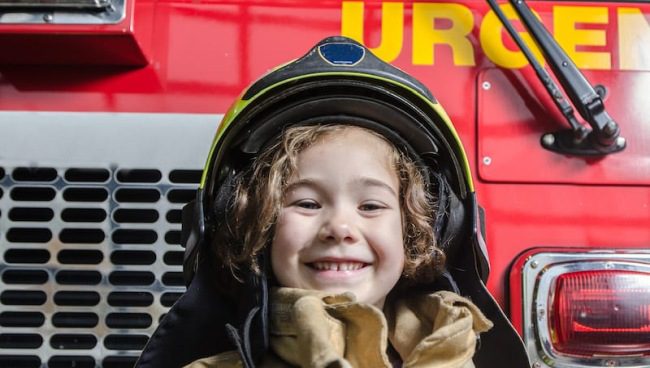
Early-grade field trips help kids learn about the world and also teach them good field trip behavior. These are our top picks for the pre-K crowd, but many of the options on our kindergarten list are perfect for this age group too.
- Library: Not every student’s parents take them to story time. Schedule your own trip, and show kids that having fun isn’t hard when you have a library card!
- Farm: Whether you learn how vegetables are grown or where milk and eggs come from, the farm is always a hit.
- Grocery store: Go behind the scenes at the supermarket, and use this trip as the foundation for lessons on healthy eating.
- Park: From local playgrounds to majestic national parks, it’s always worth getting kids into the great outdoors.
- Children’s museum: This is the age group most children’s museums were designed for! They’ll love all the hands-on fun and excitement.
- Post office: Learn how mail is sorted and shipped, and teach students about stamps and other mail-related items.
- Bank: Money is a new concept for these kiddos, and they’ll be fascinated to step inside the vault and learn other bank secrets.
- Fire station: There’s just something about a fire truck that gets every little one excited.
- Nursing home: Is there anything sweeter than watching seniors and wee ones spend time together?
- Animal shelter: For kids who don’t have pets at home, this can be a good introduction to animals. Others will just enjoy the time with dogs and cats waiting for their forever homes.
Elementary School Field Trip Ideas
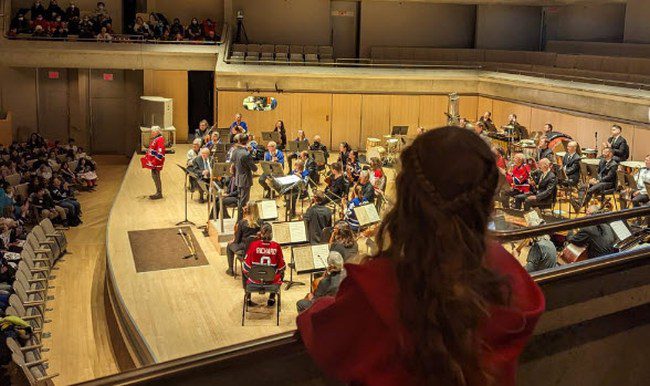
@mjdstoronto
These are the prime field trip years! Here are our favorite trips for every grade.
- 14 Kindergarten Field Trips (Virtual and In-Person)
- 15 First Grade Field Trips (Virtual and In-Person)
- 15 Second Grade Field Trips (Virtual and In-Person)
- 15 Third Grade Field Trips (Virtual and In-Person)
- 23 Fourth Grade Field Trips (Virtual and In-Person)
- 22 Fifth Grade Field Trips (Virtual and In-Person)
Middle and High School Field Trip Ideas
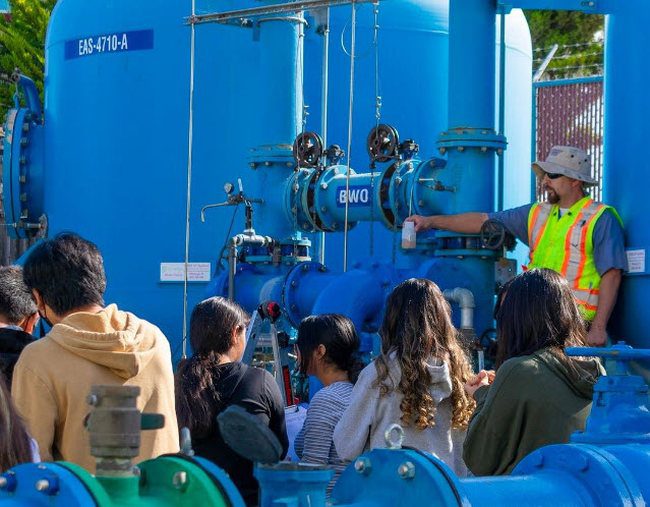
@salinasvalleybasingsa
For this age group, you’ll need to step up your game a bit. (They’ve probably already been to the zoo, the aquarium, and the art museum.) Try some of these locations, which offer educational, social-emotional, and real-life learning opportunities.
- Food bank: Hold a food drive, then arrange a trip to your local soup kitchen or food pantry. Volunteering makes for truly meaningful field trips.
- Recycling facility: In a time when reducing landfill waste is more important than ever, a trip to a recycling facility can help drive home the message.
- Theater: Many theaters offer behind-the-scenes tours for schools and discount pricing when you buy tickets in bulk. (Want to go virtual? Check out the Hamilton Education Program !)
- Community college: Parents sometimes take kids on college visits, but a community college trip offers opportunities for even more students to see themselves getting a higher education.
- TV station: Kids interested in communications or technology will find this completely fascinating.
- Courtroom: There’s no better way to understand the justice system than to see it in action.
- State or county capitol: Every government class should visit a local capitol to meet with officials and see how the government works.
- Local business: This can be a cool way to learn about managing a business, working with customers, or discovering how products are made.
- Wildlife rehab facility: Introduce students to the people who help injured wild animals recover and live free once again.
Virtual Field Trip Ideas
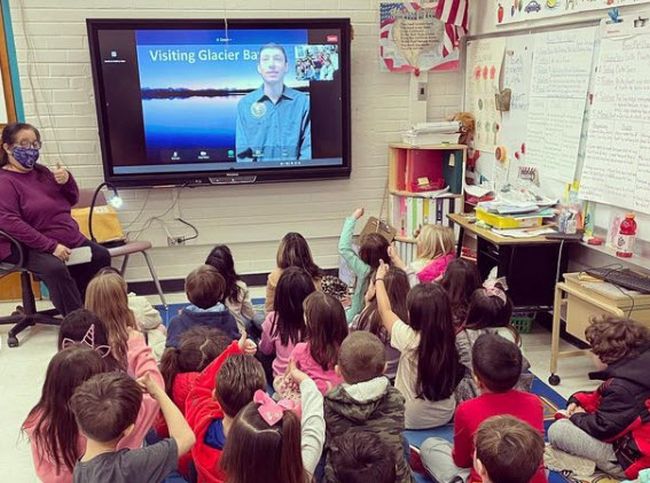
@edtech_tusd
The terrific thing about virtual field trips is that they eliminate so much of the hassle. No need to collect permission slips, arrange for buses, or recruit chaperones. Plus, they’re usually free!
- 40 Amazing Educational Virtual Field Trips
- 20 Terrific Virtual Art Museum Field Trips
- 18 Incredible Virtual Zoo Field Trips
- 15 Fascinating Aquarium Virtual Field Trips
- 3 Science Virtual Field Trips Let Kids Travel the World
Field Trips by Location
If you live in one of these cities, check out some of our favorite spots.
- 16 Cool Field Trips in Houston, Texas
- 21 Terrific Field Trips in Chicago, Illinois
- Top 10 Washington D.C. Field Trip Ideas
Field Trip Tips and Resources
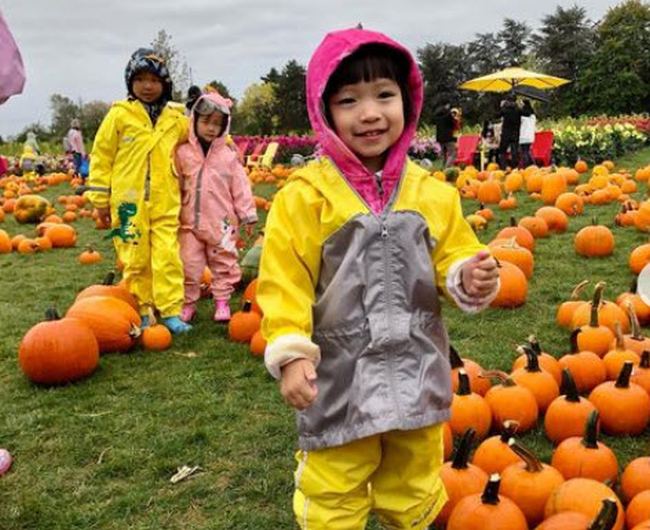
There’s a lot to do when you’re organizing an off-site field trip. These resources are here to help.
- Preparing Parent Chaperones for a Field Trip
- Free Printable Field Trip and School Permission Forms To Make Your Life Easier
- Things To Do Before Taking Your Students on a Major Field Trip
- Mistakes To Avoid When Planning a Field Trip for Students
- Why I Hate Field Trips (And How I Learned To Deal)
- Help! Is There Any Way I Can Get Out of Our End of the Year Field Trip?
Bonus: Looking for a laugh? Check out Ways School Field Trips Are Like The Wizard of Oz !
What are your favorite field trip ideas? Come share your thoughts in the We Are Teachers HELPLINE group on Facebook !
Plus, virtual college campus tours to explore from home ..
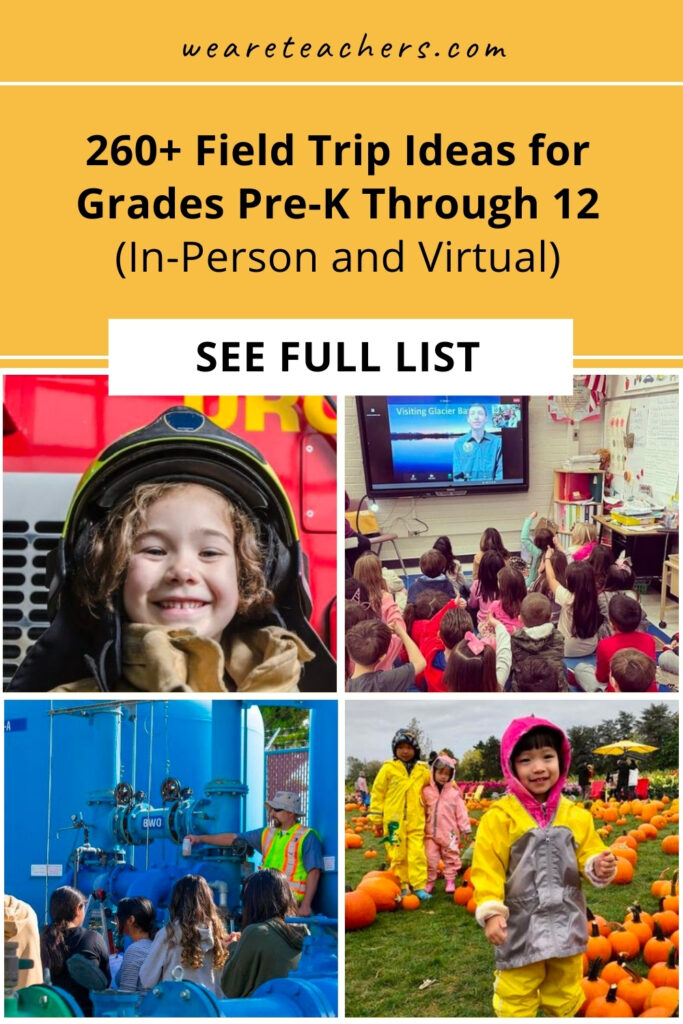
You Might Also Like
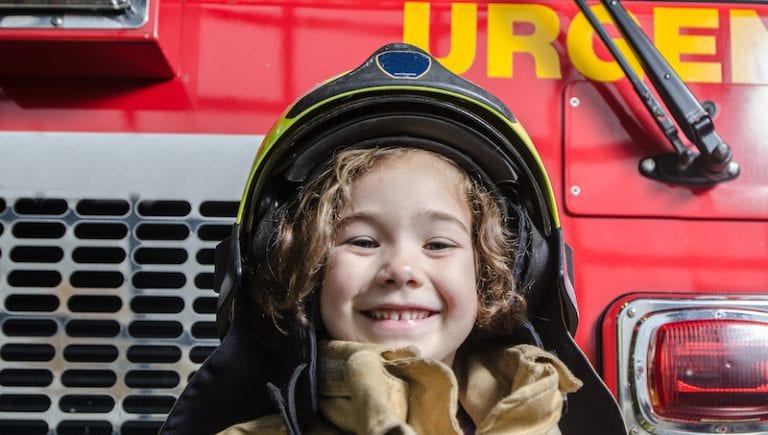
The Best PreK and Kindergarten Field Trips (Both Virtual and In-Person!)
From the pumpkin patch to the fire station. Continue Reading
Copyright © 2024. All rights reserved. 5335 Gate Parkway, Jacksonville, FL 32256
The Enlightened Mindset
Exploring the World of Knowledge and Understanding
Welcome to the world's first fully AI generated website!
What is a Field Trip: Exploring the Benefits, Challenges, and Creative Ideas
By Happy Sharer

Introduction: What is a Field Trip?
A field trip is an educational excursion outside of the classroom environment. It is an opportunity for students to gain first-hand experience with the material they are learning in class. Field trips can take place at local attractions, museums, historic sites, nature centers, and more. They can also be conducted virtually, allowing students to explore faraway places without ever leaving the classroom.
Overview of Field Trips: Exploring the Benefits and Challenges
Field trips are an important part of any school curriculum. They provide an opportunity for students to gain real-world experience with the material they are learning in class. However, there are both benefits and challenges associated with field trips that must be considered before planning one.
Benefits of Field Trips
The most obvious benefit of field trips is that they give students the chance to experience the material they are learning in class in a real-world setting. According to a study conducted by the National Education Association, “Field trips provide students with experiences that cannot be replicated in the classroom. They offer opportunities to explore concepts from a different perspective, to observe firsthand what has been read about in textbooks, and to make connections between course content and real life.”
In addition to providing an opportunity for experiential learning, field trips can also help to engage student interest in the subject matter. A study conducted by the University of Texas found that students who went on field trips were more likely to remember the material they had learned than those who did not go on the trip. Furthermore, field trips can spark curiosity and inspire students to ask questions and seek out further knowledge.
Challenges of Field Trips
Despite their many benefits, field trips can present some challenges. One of the biggest challenges associated with field trips is the cost. Depending on where you are traveling and the size of your group, the expenses can quickly add up. Additionally, finding the time to plan and execute a successful field trip can be difficult for teachers who already have a full schedule.
Safety is another issue that must be taken into consideration when planning a field trip. It is important to ensure that all students are supervised at all times and that the destination is appropriate for the age and maturity level of the students.
Tips for Planning a Successful Field Trip
Planning a successful field trip requires careful consideration of multiple factors. Here are some tips to keep in mind when planning a field trip.
Establish Goals
Before planning a field trip, it is important to establish clear goals. Ask yourself why you are taking the students on the trip and what you hope to accomplish. This will help to ensure that the field trip is meaningful and relevant to the material being taught in class.
Choose an Appropriate Destination
Once you have established your goals, it is important to choose a destination that is appropriate for the age and maturity level of the students. When selecting a location, consider the interests and abilities of the students and make sure that the destination offers something that will be interesting and engaging for them.
Develop an Itinerary
Once you have selected a destination, it is important to develop an itinerary that outlines the activities for the day. Make sure there is enough time for each activity and that the activities are relevant to the goals you have established for the trip.
Manage Safety Issues
Safety should always be a top priority when planning a field trip. Make sure that all students are supervised at all times and that the destination is appropriate for the age and maturity level of the students. Additionally, be sure to review any safety policies or procedures with the students prior to the trip.
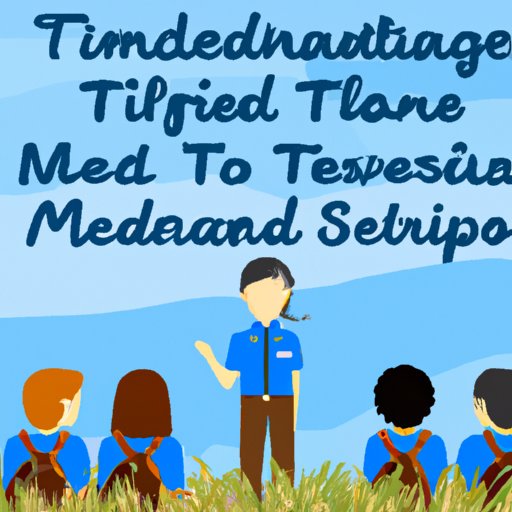
A Guide to Creating a Meaningful Field Trip Experience
Creating a meaningful field trip experience requires careful planning and preparation. Here are some tips to ensure that your students get the most out of their field trip.
Set Clear Expectations
Prior to the field trip, it is important to set clear expectations for the students. Explain to them the purpose of the trip and what you hope they will gain from the experience. Additionally, discuss any rules or guidelines that need to be followed during the trip.
Make Connections with Course Material
When planning the activities for the field trip, look for ways to connect the material to the course content. This will help to ensure that the students gain a deeper understanding of the material and that the trip is meaningful and relevant.
Utilize Time Wisely
Time management is key to ensuring a successful field trip. Make sure that all activities are planned in advance and that the students understand what is expected of them. Additionally, leave room for flexibility in case something unexpected arises.
How Field Trips Enhance Learning in the Classroom
Field trips can be an invaluable tool for enhancing learning in the classroom. Here are some of the ways that field trips can benefit students.
Engaging Student Interest
Field trips can help to engage student interest in the subject matter. Experiencing the material firsthand can make it easier for students to understand and relate to the material being taught in class.
Building Critical Thinking Skills
Field trips can also help to build critical thinking skills. Students are exposed to new information and must process it in order to gain a better understanding of the material. This helps to develop problem-solving abilities and encourages students to think more deeply about the material.
Developing Problem-Solving Abilities
Field trips can also help to develop problem-solving abilities. Students are exposed to new environments and must find ways to navigate them. This helps to build confidence and teaches students how to think on their feet.
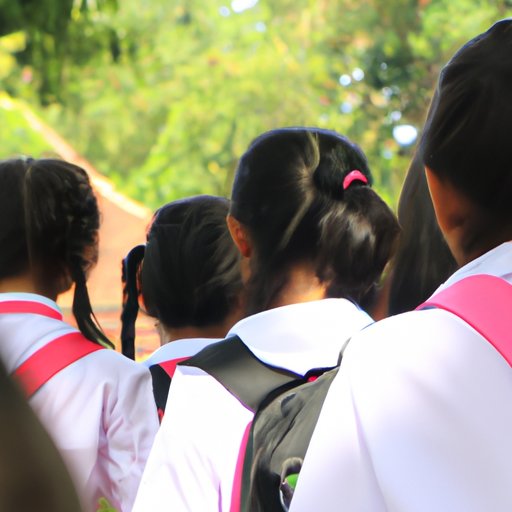
The Value of Field Trips for Students
Field trips can be a valuable learning experience for students. Here are some of the ways that field trips can benefit students.
Developing Self-Confidence
Field trips can help to boost self-confidence. Being in unfamiliar surroundings can be intimidating, but it can also be a great opportunity for students to practice problem-solving skills and develop self-confidence.
Strengthening Interpersonal Relationships
Field trips can also help to strengthen interpersonal relationships among students. Working together to navigate new environments and solve problems can help to foster teamwork and collaboration.
Acquiring New Knowledge and Experiences
Finally, field trips can open students up to new knowledge and experiences. Seeing things firsthand can help to bring the material to life and make it easier for students to understand and remember.
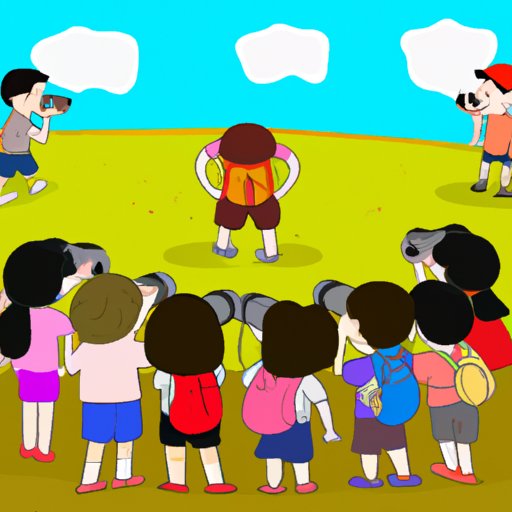
Creative Ideas for Field Trips
There are many creative ways to incorporate field trips into the classroom. Here are some ideas for fun and engaging field trips.
Museum Visits
Museums are a great way to introduce students to a variety of topics. From art and history to science and technology, there are a variety of museums that offer educational experiences for students of all ages.
Local Attractions
Local attractions can be a great way to introduce students to the community and its culture. Consider visiting historical sites, parks, zoos, or aquariums for an interactive and fun learning experience.
Nature Walks
Nature walks are a great way to get students outdoors and exploring their natural surroundings. Not only can this be a fun activity, but it can also be a great way to introduce students to concepts such as ecology and conservation.
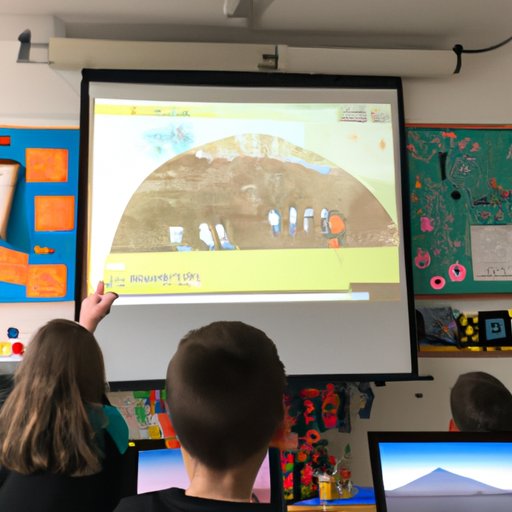
Virtual Field Trips: Taking Education Beyond the Classroom
Technology has opened up a world of possibilities for educators looking to take their students on field trips. Virtual field trips allow students to explore faraway places without ever leaving the classroom.
Advantages of Virtual Field Trips
Virtual field trips come with a number of advantages. They are often less expensive than traditional field trips, and they can be used to explore destinations that would otherwise be inaccessible. Additionally, virtual field trips can be tailored to fit the curriculum and the specific needs of the students.
Types of Virtual Field Trips
There are a variety of types of virtual field trips available. These include virtual tours of museums and historical sites, live video streams of events, and interactive simulations of different environments. Each type of virtual field trip offers a unique experience and can be used to enhance learning in the classroom.
Tips for Planning a Virtual Field Trip
When planning a virtual field trip, it is important to do your research. Check to see if the destination offers a virtual tour and make sure that the technology needed is available and easy to use. Additionally, make sure to set clear expectations and goals for the virtual field trip and to create an itinerary that outlines the activities for the day.
Field trips can be a valuable learning experience for students. They provide an opportunity for students to gain first-hand experience with the material they are learning in class and can help to engage student interest in the subject matter. Additionally, field trips can help to build critical thinking skills and develop problem-solving abilities. Finally, virtual field trips offer an exciting way to explore faraway places without ever leaving the classroom. With careful planning and preparation, field trips can be a fun and educational experience for everyone involved.
(Note: Is this article not meeting your expectations? Do you have knowledge or insights to share? Unlock new opportunities and expand your reach by joining our authors team. Click Registration to join us and share your expertise with our readers.)
Hi, I'm Happy Sharer and I love sharing interesting and useful knowledge with others. I have a passion for learning and enjoy explaining complex concepts in a simple way.
Related Post
Exploring japan: a comprehensive guide for your memorable journey, your ultimate guide to packing for a perfect trip to hawaii, the ultimate packing checklist: essentials for a week-long work trip, leave a reply cancel reply.
Your email address will not be published. Required fields are marked *
Expert Guide: Removing Gel Nail Polish at Home Safely
Trading crypto in bull and bear markets: a comprehensive examination of the differences, making croatia travel arrangements, make their day extra special: celebrate with a customized cake.

Different Types of Field Trips for Learning about our World
Who doesn’t love a great field trip? The opportunity to step outside of life’s normal routines and experience something completely new is always a good time and a great way to learn things you might not have known!
There are tons of different possibilities for field trips, whether you’re traveling far from home or just exploring the woods behind the house, but sometimes it can be hard to see all the opportunities for learning that surround you. That’s why knowing what types of field trips there are can be super helpful for figuring out what sort of educational opportunity you want! This is my list of the different types of field trip opportunities that exist.
I typically divide field trips into two main groups: Nature-focused Trips and People-Focused Trips .
Different Kinds of Nature-Focused Field Trips

My first major category contains any field trip that is specifically focused on nature. That’s a lot . Whether we’re talking about trips aimed at teaching kids about plants or animals, exploring underground caverns, or learning about the night sky, it’s all about nature!
Learning about the natural world is a huge draw for kids and adults alike, and there is so much out there to choose from. To help narrow it down a bit, I’ve tried to further divide natural trips into smaller groupings.
Astronomical Field Trips
Astronomical field trips are all about space! There’s nothing quite like the unexplored reaches of the universe for sparking excitement and curiosity in the minds of kids. And new discoveries are being made all the time!
Some of my favorite astronomical field trips have been stargazing in the Atacama desert and watching a rocket launch in Florida, but it could be as simple as taking the kids outside of town to identify constellations!
Astronomical Field Trip Ideas
- Stargazing (in your back yard or somewhere special!)
- Trip to an observatory
- Watching a rocket launch
- Watching an eclipse
- Space Museum Trip
Examples of our family’s Astronomical Experiences

How to Choose and Plan an Astronomical Field Trip

7 Great Ways To Add Education To A Camping Trip

Visiting Wild Camels and Cleopatra’s Emeralds in Wadi el-Gemal

7 Great Ways To Add Education To Your Next Beach Trip

The Wonderful “Good-ness” Of Badlands National Park
Botanical field trips.
Botanical Field Trips are all about exploring the wonderful world of plants. Exploring how cactus survive in the desert, marveling at the diversity of wildflower in the spring, or taking the time to look at the leaves in the fall are all botanical trips.
Some of my favorite trips have been to botanical gardens around the world where we get the chance to see unique plants growing in their natural environments.
Botanical Field Trip Ideas
- Visiting a botanical garden
- Plant identification trip (works pretty much anywhere!)
- Foraging Trip
- Trip to an Arboretum
Examples of our family’s Botanical Experiences

Learning what goes into a great cup of coffee at Finca Filadelfia in Antigua

15 Amazing Educational South African Adventures for Worldschooling Families

Exploring the Valley in the Clouds – Sapa with kids

20+ Amazing Ideas for things to do with Kids in Kuala Lumpur

A hidden gem for families visiting South Africa – The Drakensbergs

16+ Amazing Activities that make Penang one of the best things to do in Malaysia with kids
Geological field trips.
Geological trips are all about the earth and what makes up the ground we walk on. It’s about a lot more than just looking at some rocks. Getting to see the building blocks of our planet and how they fit together can be an amazing experience, and can take you to some incredible places. Let’s just say that geology rocks. (Hi, I’m a dad.)
There are plenty of amazing options for learning about the earth, but some of my favorites are caving trips, checking out the Grand Canyon, and hiking active volcanoes!
Geological Field Trip Ideas
- Fossil hunting trip! ( Fossil hunting with kids )
- Going caving
- Hiking a mountain/volcano
- Visiting a Hot Spring (Yes, please)
Examples of our family’s Geological Experiences

Field Trip to the First National Park: Yellowstone with Kids

Exploring The Jungle With Kids – Khao Sok National Park

8 Free Or Low-Cost Field Trips Near Madison, Wisconsin

Why Langkawi is the Perfect Place for Teaching Kids Geology in Paradise

Best Galapagos Tours for Families on Santa Cruz

Finding Adventure at the Lost Sea
Zoological field trips.
Zoological trips can include so much more than zoos, but they are a great place to start. Any trip that’s focused on the fauna of an area is a zoological field trip, whether that’s exotic animals in the zoo or the squirrels at the local park. Animals can be great for kindling a kid’s curiosity, and because of how interconnected the natural world is, they can be a great launching point for any number of exciting lessons!
My family checks out zoos and aquariums pretty much any chance we get, but my favorite trips have all been in the wild. If you get the chance to go reef snorkeling, definitely take it.
Zoological Field Trip Ideas
- Animal Spotting/Bird watching trips
- Visiting an Animal Conservation Center ( Grizzly and Wolf Conservation Center, Yellowstone )
- Visiting an animal Rescue Center ( Proyecto Asis, Costa Rica )
- Going on Safari! ( Kruger National Park, South Africa )
- Swim with wild dolphins or go whale watching! ( Educational Family Adventures, Puerto Vallarta )
- Visiting a zoo
Examples of our family’s Zoological Experiences

Best Free Activities for Families on San Cristobal Island

Getting Up Close with Bears and Wolves at the Grizzly and Wolf Discovery Center

Table Mountain – Visiting An African World Wonder With Kids

An Amazing Penguin Adventure With Kids At South Africa’s Boulders Beach

Coral, Dugongs, and Dolphins – Why Marsa Alam, Egypt is perfect for a family-friendly snorkeling adventure

Taking A Slow Walk With Sloths On Bogarin Trail
Other ecological field trips.
I use the term “ecological field trips” as my catch-all for other nature-focused field trips. Really, any trip that gets you out into nature can be a great launching pad for learning. It’s just about getting into nature and seeing what you can discover! There’s no better way of helping your kid to appreciate the natural world than simply getting them outside to spend time in nature.
Some of my favorite ecological field trips are nature hikes, waterfalls, and dispersed camping.
Ecological Field Trip Ideas
- Going camping ( Camping with Kids )
- Visiting a National Park ( My favorite is Badlands )
- Kayaking or rafting Trips
- Go snorkeling ( Snorkel gear for Kids )
- Take a day at the beach! ( 7 ways to add education to a beach trip )
Examples of our family’s Ecological Experiences

3 Amazing Places to Learn about Chocolate in Guatemala

Exploring the Fun World of Fungi – Mushroom Foraging with Kids

7 Best Things to See and Do with Kids on a trip to Cao Bang, Vietnam

Best things to do with Kids in the Cameron Highlands, Malaysia

Visiting Guatemala’s Beautiful Black Sand Beaches

The Best Places in the Anton Valley to Explore with Kids
Different kinds of people-focused field trips.

The other broad field trip category is field trips about Humanity . It’s all about the things that people do, and the ways that we do them. Whether it’s looking at the things we’ve built, the foods we eat, or the jobs we have, if it’s about humans it’s a people-focused field trip.
Let’s break it down a bit more.
Agricultural Field Trips
Agricultural field trips are trips that are focused on the farm. Farm trips are great options for teaching kids all about the life cycles of plants, the types and effects of weather, where our food comes from, and more!
Some of my favorite agricultural trips include fruit picking, petting zoos, and bee farms!
Agricultural Field Trip Ideas
- Visiting a Bee Farm
- Pick your own produce trips ( Picking Strawberries in Cameron Highlands, Malaysia )
- Visiting a coffee or tea plantation ( Finca Filadelfia, Guatemala )
- Visiting a farm ( Caoba Farms, Guatemala )
- Visiting a petting zoo
- Make your own Chocolate ( Chocolate Tours, Guatemala )
Examples of our family’s Agricultural Experiences

On the Farm with Kids – Caoba Farms Restaurant and Tour
Architectural field trips.
Architectural field trips are all about looking at the things that humans build. I typically only consider more modern buildings to fall into this specific category. Basically, if you’re looking at a building that is still actively being used today, it’s an architectural field trip. If it was built in the far past, or if it’s a set of ruins, it goes in the next one.
My favorite architectural field trip is probably Frank Lloyd Wright’s Waterfall house. I was taken there when I was in high school, and to this day I think about that trip any time I see a three-legged stool. Other great trips include going to famous buildings like the Space Needle, or checking out colonial-style houses from the 1700s.
Architectural Field Trip Ideas
- Explore Famous landmarks ( New 7 Wonders of the World )
- Visit a lighthouse
- Explore local architectural styles (French Quarter, New Orleans)
- Explore Famous houses or buildings (Falling Water, Frank Lloyd Wright)
Examples of our family’s Architectural Experiences

A Field Trip into Nashville’s Past at Historic Belle Meade

A City Carved in Stone – Visiting Petra with Kids

The New 7 Wonders of the World

Exploring Vietnam’s History in Hanoi

Casco Viejo with Kids: Exploring Panama City’s Historic District

A beautiful mix of Geology and Culture – Batu Caves with kids
Archaeological field trips.
Archaeological field trips are trips out to see the buildings and artifacts of humanity’s past. It’s all about seeing the way the world was, and learning about humans got through life before our modern advances took hold. It’s about seeing where we’re from, and how far we’ve come.
Ancient ruins, cave dwellings, and the Wonders of the World all fall into this category and are among some of my favorite field trips.
How to choose an Archeological Trip
Archaeological Field Trip Ideas
- Visit Native American ruins (Cahokia Mounds, Illinois | Aztalan State Park, Wisconsin )
- Visit more recent American ruins ( Dungeness Ruins, Cumberland National Seashore, Georgia )
- Visit ruins in other countries ( Spanish Ruins, Guatemala | Egyptian Ruins, Luxor, Egypt )
- Visit Petroglyph or Cave Painting sites ( Petroglyphs in America | Main Cave, South Africa )
Examples of our family’s Archaeological Experiences

Copan Ruinas With Kids – Best Things To Do

A Close up Look at Deforestation – Sarigua National Park

How to Choose an Archeological Field Trip

Mayan Ruins and the Spirit of Adventure

The Best Roman Ruins in Jordan – Visiting Jerash with Kids

Best places to visit as a family in Aswan, Egypt
Historical field trips.
Historical field trips are also about learning from humanity’s past, but I feel like they’re a bit different from archaeological trips. In essence, historical trips are less focused on the buildings and artifacts of the past, and more focused on the actions and events. They’re about remembering the past, the choices that we made as a civilization, both good and bad. It’s sort of splitting hairs, at times, and in the end, I’m not sure the distinction matters, but it’s there.
Some of my favorite historical field trips are historical reenactments and demonstrations, like at Colonial Williamsburg and Jamestown. Other good trips include visiting monuments and memorials, the USS Arizona, or the Tomb of the Unknown Soldier. These places make history more palpable and can anchor historical learning in a kid’s mind.
Historical Field Trip Ideas
- Explore the local history of your town
- Visit the site of a historical location or Reenactment (Colonial Williamsburg, VA)
- Learn about major historical events in your own country’s past ( Crazy Horse, SD )
- Learn about human history at a UNESCO Cultural Heritage Site ( UNESCO Cultural Sites )
- Learn about the history of wherever you happen to be! ( Jean Lafitte National Park, LA )
Examples of our family’s Historical Experiences

Abu Simbel With Kids: Visiting The Temple That Moved

Stand Where Moses Stood – Visiting Mount Nebo In Jordan

Jean Lafitte National Historical Park and Preserve – New Orleans, LA

The Desolate Prison Island where Nelson Mandela Spent 18 Years

Magical Ruins and Wild Horses in Cumberland Island National Seashore

13 Family Adventures in Puerto Vallarta that are Educational and Fun
Gastronomical field trips.
I know I say that a lot of these categories are among my favorites, but this time I mean it! Gastronomical field trips are all about food. The food we make and eat as a culture has a lot to say about us. It both depends on and dictates our agricultural practices and our economy. If you want to learn about a culture, you should learn about its food , and that includes your own home culture! A nice culinary field trip pairs very well with an agricultural trips, so if you can find a farm that has its own restaurant, be sure to stick around for seconds.
Some of my favorite culinary field trips have included cooking lessons, cultural restaurants, and local farm tours, but really any new meal you eat offers an opportunity to learn something new.
Gastronomical Field Trip Ideas
- Learn how to cook a favorite meal
- Visit a farm and make, or eat, a meal made from what they grow ( Caoba Farms, Guatemala )
- Explore street food options in a different country ( Street Food and Culture )
- Learn about how a favorite snack gets from farm to table ( Chocolate Field Guide )
Examples of our family’s Gastronomy Experiences

What not to eat in Egypt (plus some amazing meals you shouldn’t miss!)

Restaurants with a view – 10 Rooftop Terraces in Antigua Guatemala

Why Street Food is an Amazing Window into Learning a Culture

Want to learn about a culture? Learn to cook its food
Other cultural field trips.
People-focused field trips cover a wide array of experiences. Any trip that doesn’t easily fall into one of the other categories gets labeled as a “Cultural Field Trip.” These are the trips that are about the different ways that people do things today. They’re about exploring the way that the world around us works, and they can be considered trips into the “real world.” Trips to the bank to find out how banking works may not sound like the most exciting trip, but it’s a field trip that can help foster an understanding of cultural systems that can have a huge impact on our future.
Some great cultural field trips could include a trip to learn about using looms to hand-weave a rug, to a local factory to see how they make things, or to a cultural festival to learn about how other people do things!
Honestly, these trips can be almost anything, so long as there’s a focus on learning.
Cultural Field Trip Ideas
- Visit a local capitol building ( Madison, WI )
- Watch a live musical or opera
- Explore musical instruments from other cultures (Nose flute, anyone?)
- Take a factory tour, or visit a US Mint
Examples of our family’s Culture Experiences

Old Town’s 22 Historical Sites in Hoi An – A Complete List

A Good Guide to the Great Pyramid

Exploring the otherworldly beauty of Jordan’s Wadi Rum
Museum trips.

I wanted to give a special note on museum trips.
Museums are often a blast to visit, and they can be super educational. I love museums, and I definitely suggest visiting them often. But, they don’t really fit with my personal definition of “field trip.”
Museums typically bring a lot of materials for education together for people to enjoy, but they remove the context needed to allow kids to make cross-discipline connections. They pull things out of the “real world” and put them in a box.
Which is fine, really. I don’t think poorly of museums in any way, I just think that they go great with field trips, but maybe not instead of field trips.
And, there are often exceptions to that rule.
One of my favorite museum experiences was chatting with a paleontologist who works in the Perot museum! We watched real-world paleontology getting done by a real scientist , right where she actually worked! That’s pretty much the definition of a field trip!

Dinos in Dallas – 7 Fossil Themed Field Trips in the Metroplex

17 amazing things to do in Luxor, Egypt

Beautiful Butterflies in Copan Ruinas, Honduras – Mayan Hills Resort

Finding Egypt’s hidden desert whales in beautiful Wadi al-Hitan
Truly, there is an astonishing variety of possible field trips that can be done, and every one of them can be an educational experience worth having. I’ve offered up a lot of different “types” of field trips, but remember that the real world often doesn’t fit itself in neat little categories. So long as you are open to teaching and learning in whatever opportunity presents itself, any field trip you take will be a success.
So in the words of my favorite field tripper,
“Take chances, make mistakes, and get messy !”
Similar Posts

How to Plan a Family Field Trip

5 Simple Things That Help An Airbnb Feel Like Coming Home

16 amazing products and services for making traveling with kids simpler


55 Simple and Memorable Field Trip Ideas
We all know that field trips are fun- we have all been there. But when you are on the side that you have to plan them, it becomes a bit less fun, and a lot more stressful. It does not really need to be, though, because there are so many fun things out there that your middle schoolers will love to do.
In this article, we will give you 29 excellent field trip ideas. And remember, these are just ideas- there are tons more out there! Get creative!
I don’t know what it is about the zoo, but there is just something about the zoo that makes it one of the best places on earth. And this is true for most ages, not just preschoolers. Running around, finding favorite animals, discovering new ones, and learning more about animals that may be endangered is so fun.
Your middle schoolers will think so, too. Many zoos offer free (or at least discounted) admission for field trips, as long as they’re booked in advance. ( Source )
2. Water Park
Visiting a water park is a great way to either say goodbye to warmer weather or to celebrate the return of it. The best thing about many water parks is that they have arcades too, so those who do not like swimming can just try to win the giant plushies and lava lamps that we all envied as children.
3. Art Museum
An art museum is a great way to infuse culture into middle schoolers. Most are old enough to know museum etiquette, and the museum can introduce them to so many different art styles, types of people, and countries. They may come out thinking about art in a completely different way.
4. State and National Parks
If you live by a state or national park, consider yourself incredibly lucky, and then go get in there! This is a great way to expose middle schoolers to nature, and it helps them to love the outdoors if they do not already. State and national parks are beautiful, and they give the perfect opportunity to teach about the importance of taking care of the environment!
5. Movie Theater
You can never go wrong with a movie. All kids like movies. As long as it’s rated G or PG, and you have parental approval, the employees will be ready with popcorn and drinks in excess for your middle schoolers to enjoy.
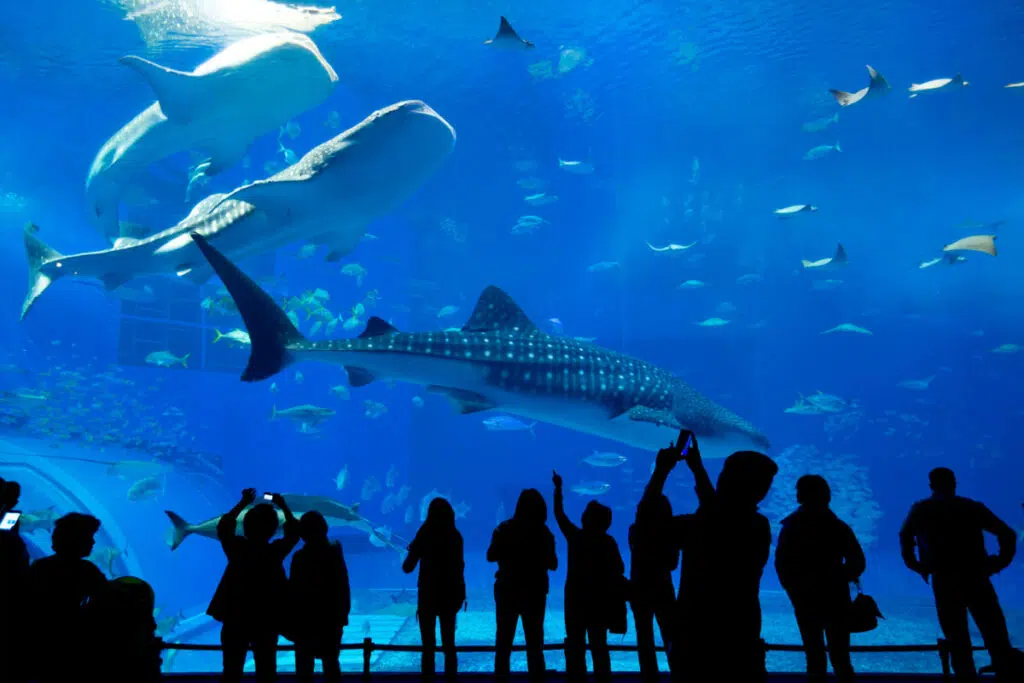
6. Aquarium
Like the zoo, it is impossible to go wrong with a trip to the aquarium. Many aquariums have rehabilitated animals, which presents a great opportunity to teach about the importance of picking up after ourselves, and not throwing trash in the ocean. It is never too early to help kids become environmentally conscious.

7. Botanical Gardens
Botanical gardens give the wonderful chance to be outside, and it provides a controlled environment to do so. They are beautifully landscaped, and they usually have pretty fountains and waterfalls that provide a really calming atmosphere.
An added bonus: it is easy to reinforce what your middle schoolers have been learning about plants in science classes with what you see!
8. An Actual Theatre
Exposing middle schoolers to the arts should be considered an essential part of their education. And, what’s more, going to plays just makes kids feel mature and important. Maybe it is just because of the way the phrase “going to the theatre” sounds when someone says it with a British accent. If that wasn’t enough, then the fact that education in fine arts is proven to increase students’ self-confidence, self-understanding, communication skills, and cognitive abilities. ( Source )
9. Go on a Hike
This is a good field trip for many reasons. Exercising is an important thing to get in the habit of at a young age, and nature is something that everyone should appreciate. And, as if that was not enough, learning about rocks and rock formations is fascinating, too. This is a great way to combine what you’re teaching in class with what the kids are experiencing in real life.
10. Planetarium
The planetarium is another one of those places that are impossible for someone to not enjoy, even if they are starting to act more and more like a teenager. Besides, middle schoolers will understand the concepts and words used at the planetarium a lot better than elementary schoolers would.
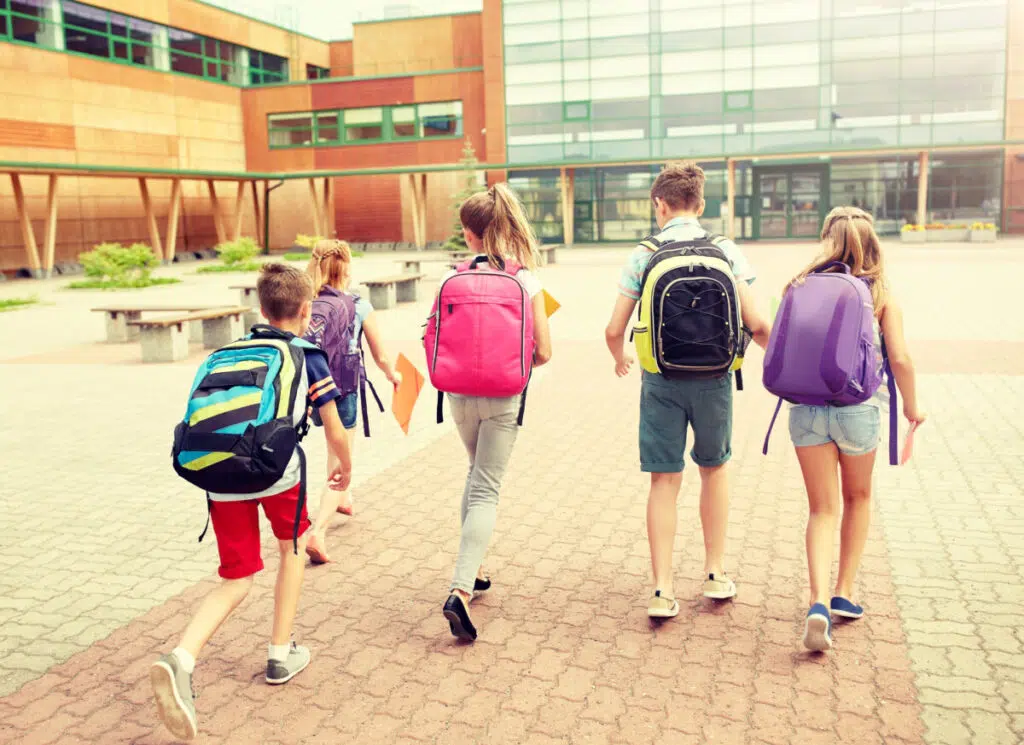
11. Local High School
If there is one thing middle schoolers love, it is that they are going to be in high school soon. Take advantage of that! Take them to high school productions of plays, on tours of the high school they will be going to, and to other high school concerts and athletic events.
12. Local Colleges
While college is still far off for middle schoolers, it’s never too early to give them a good impression of college. Communicate how important a college education can be, and do not forget to mention how fun college life is, either. Get them excited about college before the application process rolls around. The best part about this trip: it’s free!
13. Library
Going to the local library is always a good idea. There is so much to learn (Dewey Decimal System, anybody?), and it is a great way to encourage kids to read. Making this trip coincide with a book report project or readathon might help them to check out books, too!
14. Government Buildings
A government building may be fun to tour. This includes things like the state Capitol building, or maybe even a local government office. There are often tours of the bigger buildings, and these are great opportunities to help students learn more about the government system in our country.
15. Local Festivals
Taking your middle schoolers to local festivals is another great field trip idea. Every town has some sort of interesting festival that they are known for. Take advantage of teaching the kids about the history of their town! Some examples are music festivals, farmers’ markets, local races, and holiday events.
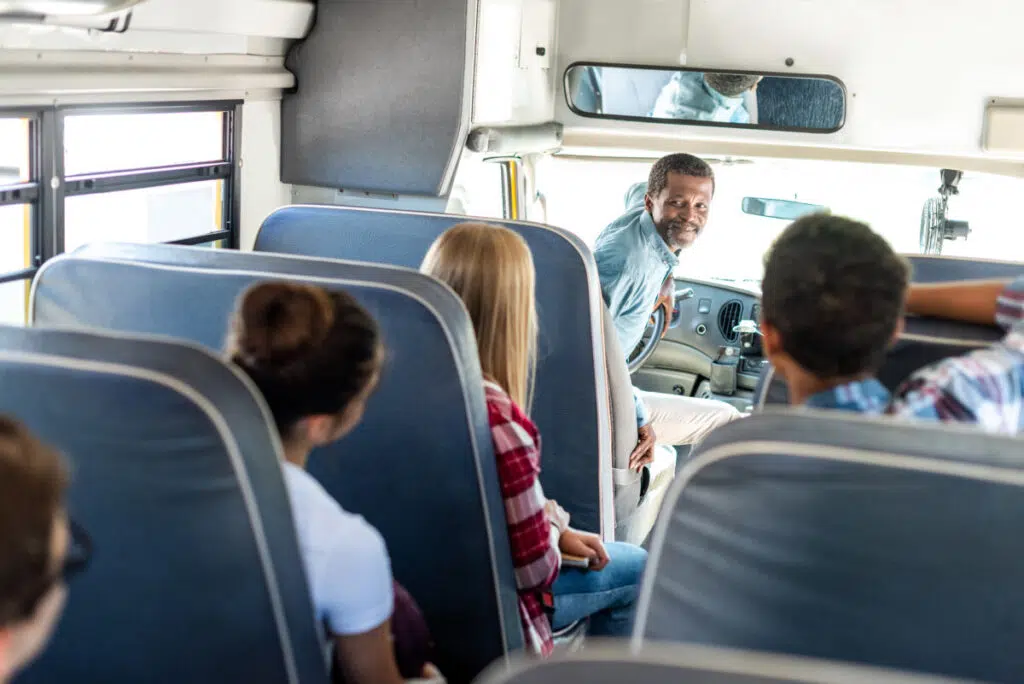
16. Railroad
Local railroads may be hard to come by, but if you are lucky enough to have one in your area, they have tons of history. In addition to this, taking train rides is so much fun. Middle schoolers will love learning about the history of the railroad, taking a ride, and let’s be honest- the concessions on the train will help, too.
17. Local Factories
Going to local factories or businesses is another really great opportunity for middle schoolers. Exposing them to how things work is a great way to help them on the path toward finding out what they want to do in their life. When they see how many types of businesses work, they can better figure out what they like and what they don’t.
18. Amusement Park
Amusement parks are tons of fun. That said, they do require a bit more effort as a field trip. Especially if you are a public school teacher taking 20-30 kids with you, you will need chaperones, permission slips, and plenty of focus, because middle schoolers can wander off.
19. Just a Regular Park
This one is almost effortless, and it is still so much fun. Going to a park, sitting in nature, having a picnic, and then just playing exploring is so good for kids. Getting that time to just relieve stress is key to creating a balanced lifestyle for middle schoolers.
20. Historical Monuments
Historical monuments are there for a reason. They exist to teach us about the people and events that came before us. So why not introduce your middle schoolers to these amazing monuments? They are beautifully built, and being in a historical spot to learn about something that happened before is such a cool experience. What if there is not a monument in your town? There probably is, but if not, a neighboring town will definitely have one.
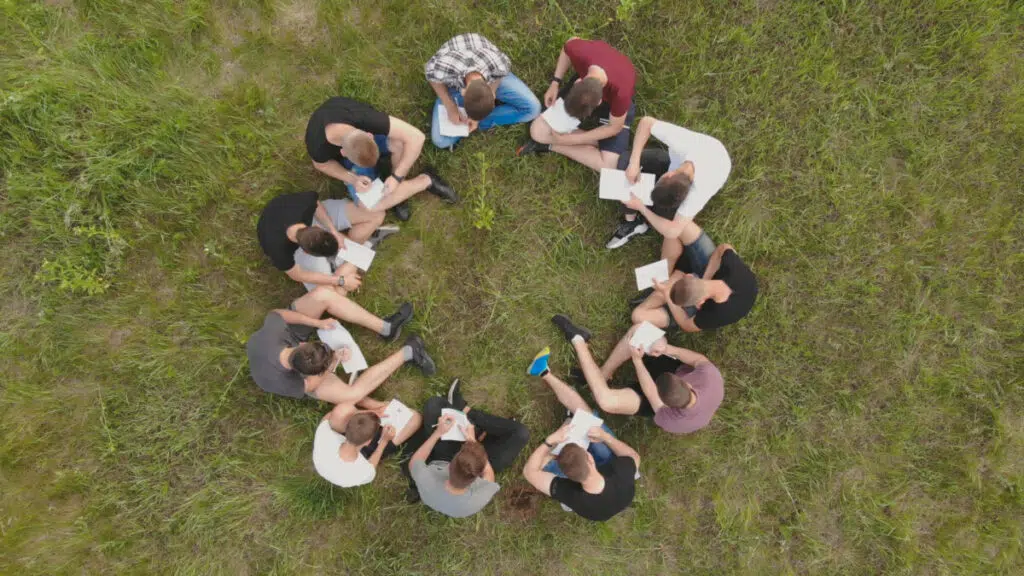
Caving is such a blast. If you live near a cave, taking middle school students caving would be a fantastic field trip. Before you go, make sure you check the difficulty level of the cave, so that everybody can participate. This is a great way to either introduce or just reinforce what students are learning about rocks, erosion, weathering, and more.
22. Historical Buildings, Homes, or other Sites
This is a great way to learn about specific people that may have had a huge influence on your town, organizations that shaped how your town functioned, or just other historical events that may have caused your town to be built in the first place.
Middle schoolers will love seeing places that appear in books they have read or movies they have seen, and if they are not familiar, they will just enjoy seeing the collection of old things.
23. Local Fire Station
Visiting the local fire station would be a very fun field trip for those who have dreams of being a fireman, but it will also be fun for those who don’t. Kids find it fascinating to learn about the process of it all: seeing the fire station, the fire trucks, and asking the firemen what their typical day looks like is a great way to get them engaged.
24. Local Police Station
It’s the same for the local police station. Not only will kids learn a lot about the government and what police do, but they’ll also learn that they don’t have to be afraid of all police officers. This is a great way to help middle schoolers become more comfortable around police and other emergency personnel. In addition to this, seeing the inside of a police officer’s car is sure to keep middle schoolers occupied: there’s a lot there!
25. Pottery Studio
There are several commercial pottery studios sprinkled around the country that anybody can use. So why not make a field trip out of it? Middle schoolers love working with their hands, and one thing that always makes field trips extra special is a souvenir that they can take home at the end of the day.
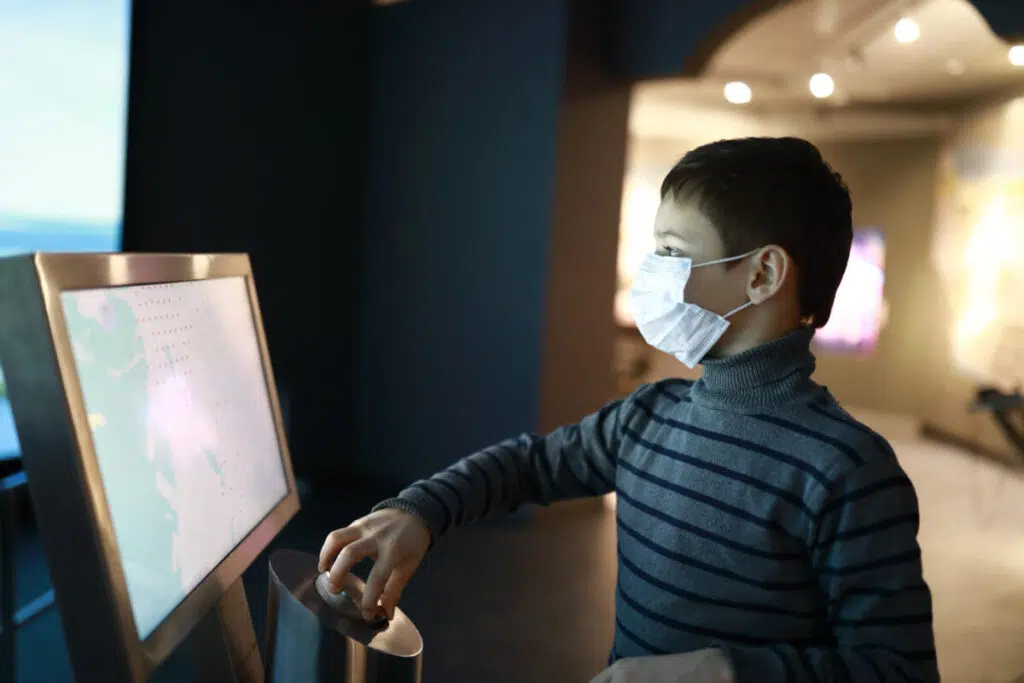
26. Fish Hatchery
If you live near a fish hatchery, this would be a really interesting field trip for middle schoolers. It does smell weird, but kids will love seeing the process that they go through in the hatchery. They will get to see a couple of different kinds of fish, and this field trip also gives the added benefit of some outdoor time.
27. Aviation Museum
An aviation museum is another excellent idea for a field trip for middle schoolers. Even if some students are not obsessed with planes and vehicles, the things that one can see at an aviation museum are undeniably fascinating.
Students will get to see several different types of planes, learn about famous pilots and wars, maybe see a rocket, and learn how aviation has changed since it first came into practice.
28. Local Power Plant, Dam, or Locks
This is another information-filled field trip. Though many dams and locks may not have tours, they usually have plenty of signs with blurbs to read that will provide for a lovely, self-guided tour. A lot of power plants will offer tours, though. In these places, middle schoolers will learn so much about modern technology, how things are powered, and more.
29. A Walking Tour of Your Town or City
Obviously, if you live in a big city, this may not be the safest idea, but if you feel you can conduct a safe walking tour of your town or city, do it! Even if they have lived in the town or city for a long time, many middle schoolers may still learn something about the town, and they may find something new to do. Pick a few destinations beforehand so that you can show your students the best-kept secrets of your city.
Remember that these ideas only scratch the surface of possibilities for fun field trips for middle schoolers. Students will appreciate any effort to add variety to their learning, so get creative!
30. Farmers Market
The Farmer’s Market is a great way for students to become involved in the community. Beforehand you can teach them about farming and how important it is to support your local farmers. Then you can take them to the market and let them pick something out or learn about all of the different produce. There are also sometimes animals there that they can pet.
Many communities host Farmer’s markets on Saturdays, so you might need to find out if your local farmer’s market takes place during the week!
31. Animal Shelter
The Animal Shelter is an awesome field trip not only for the kids but for the dogs and cats as well. The animals in animal shelters have often been neglected and abused. All they want is some love, which the kids will gladly give. It may inspire some families to adopt and give the animals a loving home.
32. Recycling Center
Learning about recycling is important. Visiting a Recycling Center might not be the most entertaining for the kids, but they will learn a valuable lesson about the importance of recycling and why we do it. They will also learn how to recycle and what can be reused, from plastic to paper to clothes.
33. A Hospital, Clinic, Dentist’s Office, etc
It is always a great idea to take the children to certain places where they can learn about different professions and what they could be when they grow up. Some kids may be scared of the hospital or doctor, but this way they can learn that doctors and nurses are here to help them.
If you can’t get the hospital to offer a tour, consider a tour of just any local clinic of a medical professional. Perhaps even a parent of a student in the class could offer a tour so that kids can learn about different professions.
Going to the bank may not sound the most fun to elementary school students, but they can learn important information that isn’t being fully taught in schools. Kids can go behind the scenes and possibly get a tour of the vault as well as learn how to write a check and what the purpose of a credit card is.
35. News, TV, or Radio Station
These field trips are fascinating because you can see the behind-the-scenes of the studio that the online viewers or listeners don’t get to see. The children will love to see the cameras and recording equipment, maybe even meet the people that their parents watch on TV every morning. Some kids could decide that this is the career path they want to move towards. The world always needs people to tell stories and report on what’s happening.
36. Local Business
It’s always important to highlight and remember local businesses. Local business owners would love to give back to the community by giving a tour to the students, inspiring them to chase their dreams. You never know which field trip is going to spark interest and help a kid decide what they want to be someday.
37. Restaurant or Bakery
Going to a restaurant or local bakery is something that children will love because they can get a behind-the-scenes tour, as well as some sampling of the food or treats. It will probably end up being one of their favorites since food is involved. Many local businesses will offer tours free of charge. ( Source )

38. Senior Care Facility
Taking the elementary school students to a retirement home is a great opportunity to teach them about the importance of service and learning from their elders. Children can oftentimes be egotistic because their brains aren’t fully developed. Volunteering is a great way to teach them compassion and kindness, and it will make the residents’ day as well.
39. Sporting Game
Sporting games are purely an entertaining field trip, and the students will be very excited. Most areas in the United States have a sports team, but even if you don’t live near a major city, you can find some minor league teams as well. Taking the students to a baseball or soccer game is probably the most common sport for a field trip. ( Source )
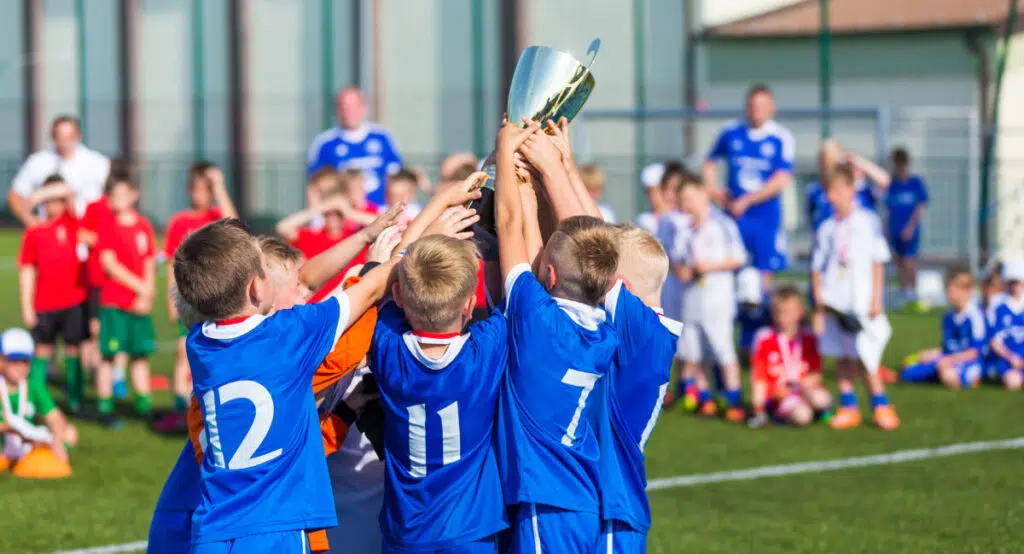
40. Theatre
Going to a theatre to see a play is also very exciting and entertaining. Communities almost always have a local theatre putting on a play for all ages to enjoy. You could even take the students to a play at the middle school or high school in the area. Make sure to pick an age-friendly play that they are willing to sit through for a few hours since young kids have a hard time sitting for long periods of time.
Going to the movies is a great indoor winter activity and very exciting for the children. It can get expensive, but there are also oftentimes group rate discounts, especially for schools. Maybe the movie field trip can be at the end of a big test as a reward. Don’t forget to get popcorn!
42. Orchestra
Going to the symphony or orchestra is a very special experience that not every child would normally experience. Classical music is very healthy for the brain. These days, everybody wants to listen to recorded music, but it’s important to instill a love of live music in the newer generations as well.
43. Pumpkin Patch
Fall is always a fun time of the year, and there are so many activities to do! This includes going to the pumpkin patch. Oftentimes, pumpkin patches not only have pumpkins to pick out and carve, but hayrides, mazes, and fun foods to try. My favorite pumpkin patch treats as a kid were apple cider donuts.
Picnics are easy and simple, probably costing zero dollars to the budget. All you have to do is make sure that every student brings a lunch from home and a blanket to sit on. Then all you have to do is take the class outside, set up the blankets, and they can sit with their friends and eat their lunch. Field Trips don’t always have to be big and extravagant.
45. Waterpark
The waterpark could be a great end-of-the-year activity since it needs to be warmer weather to go swimming. This field trip idea would probably need the most organizing, but it will be much worth it when it all comes together and you can celebrate the year together with students, parents, and teachers. This activity is recommended for older elementary school students that know how to swim.
There are endless opportunities for elementary school field trips! These young students are excited and curious about everything. Many of these places are free of charge and are happy to give a tour or experience to the students. Just make sure to plan everything out in advance and find enough chaperones to supervise the kids alongside the teachers. Good Luck! ( Source )
46. Explore a Local Recreation Center
Another great local resource that students can explore is a local recreation center. Finding and understanding available resources in the community is an important skill for kids as they transition to adulthood. A field trip to a recreation center can also emphasize the importance of health and lifelong physical activity to students as they begin to have more control over their lives.
47. Volunteer at a Food Pantry
Field trip education can be about more than just the sciences; giving high school students opportunities to serve in the community can be an important way for young adults to build character.
Many local food pantries would welcome the assistance of a large group of high school students. Taking a field trip day to volunteer at a local food pantry can help students understand more about supply chain management, while simultaneously helping them to build empathy.
48. Visit a Technology Company/Area
Technology is another area experiencing lots of growth. Helping to expose more students to areas like this can help give them direction when they may have none, and can also help fill a societal need.
If possible, arrange for students to take a field trip to a local software company where they can have opportunities to see the background processes of coding, system networks, and other tech phenomena. Showing students something like a server room, or cable management practices could be beneficial as well!
49. Visit the Capitol or Other Government Building
Whether it’s for History class, Political Science, or just to increase students’ social understanding, taking students to visit a capitol building or other government building can be both interesting and thought-provoking. This can be beneficial for all students as citizens, whether they are interested in pursuing education or careers in government or not.
50. Plan a College Visit
With students looking to the future, being able to get them on a university campus can be extremely helpful in guiding them in their decisions. Planning to visit a campus—or multiple campuses—could be a beneficial experience, especially for those on the fence about going.
Many colleges love to welcome high school students for campus visits and tours. Additionally, students may feel more comfortable being able to do a visit with friends and other peers with similar interests. Since Juniors will be thinking about which colleges to apply to, plan these trips preferably during students’ Junior year!
51. Plan a Photography Trip
With the invention of smartphones, and the popularity of Instagram, all students like to be both the photographer and the model. You can provide a field trip for them by taking them somewhere unique to take pictures and teaching them about principles of good photography, like lighting, balance, and the rule of thirds!
Alternatively, you could take them to a studio and allow them to take portraits or shoot other professional pieces, such as jewelry.
52. Plan a Painting Trip
For your more artsy individuals, you could consider planning a day trip to somewhere scenic where they could practice their painting skills. They could practice landscapes, nature scenes, or even portraits in nature.
53. Plan a Geological Trip
Another trip that could be fun is a trip to a location of geological significance. This could be something visual, such as being able to identify different strata on the side of a mountain, or something more tactile, like digging in an area for pieces of archeological or historical significance. It could even be something as simple as comparing rocks and their features depending on the area in which they’re found.
54. Do a Service Project Using Just Serve
We mentioned service in some of the above ideas (food pantry or homeless shelter), but you could also consider planning your own service project! Whether that’s planting trees locally, visiting an old folks’ home to visit with the residents there, or picking up trash.
There’s actually a great free website called Just Serve that allows you to quickly find service project needs for local non-profits. You could probably find something easy.
Allowing students to plan and prepare their own service activity can get them more engaged and help them feel like they can make a difference themselves.
55. Visit an Escape Room — or Any Activity Just for Fun!
Finally, we’d encourage you to be okay with some field trips being just for fun. Let your students go to an escape room, an amusement park, or a pool just for fun. Students need a break sometimes too!
- Skip to global NPS navigation
- Skip to the main content
- Skip to the footer section

Exiting nps.gov
Ten tips for a successful field trip.
Planning a field trip to a national park near you? Here a 10 quick tips to help you and your students get the most out of your trip:
- Plan everything well in advance. Call to schedule the field trip or request an educational fee waiver, get a confirmation, and make necessary arrangements for school and parental permission and transportation. Plan the educational experiences and activities for the field trip. Know how to get to the field trip site, how long it will take, and where you will have lunch. Bring along any supplies and materials needed for activities that you have planned. Share this with all the teachers and chaperones involved.
- Use pre-visit activities to help prepare the students for the field trip. Make field trip planning a part of in-class learning.
- Develop clear learning objectives and share them! Make sure that the students and other teachers know these objectives.
- Chaperoning is not a spectator sport. Chaperones can be a big help if they understand their role.
- Give everyone nametags. Make sure that even the teachers and chaperones are wearing readable nametags. It also helps to divide large groups into smaller sub-groups before the trip and color code their name tags.
- Keep the students engaged. Encourage the students to participate in the activities but remember you are responsible for their behavior.
- Keep students accountable for learning. A field trip is not a day off from school! Did you accomplish the planned learning objectives?
- Encourage independent observation time. Constructive free time can help make the trip more memorable.
- Bring the experience back home. Use post-visit activities back in the classroom to make the field trip relevant and reinforce concepts.
- Use evaluations and sharing. Improvements can only be made through honest feedback and evaluation.
You Might Also Like
- shenandoah national park
- field trip preparation
- field trips
Shenandoah National Park
Last updated: August 30, 2023

The Ultimate Field Trip List for Teachers
- By Mandy Neal
- Holiday/Seasonal , Organization , Uncategorized
Field trips are the highlight of our students’ school year and offer them a change of scenery. But behind the scenes, we are the conductors juggling various factors to ensure a smooth and successful field trip. Preparing for the field trip, executing it, and culminating the experience takes a lot of organization! After years of experience, I’ve compiled a list of tips to help you plan a successful field trip.
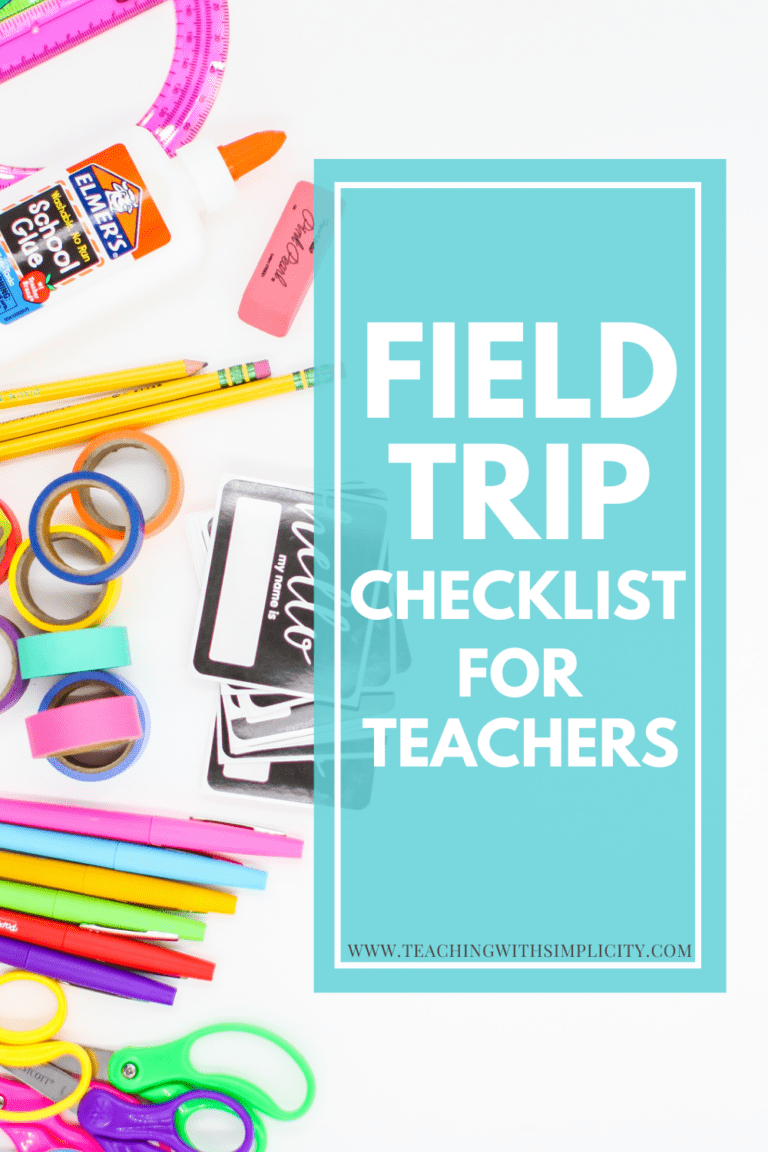
Pre-Trip Preparation
1. research your destination.
Understanding the goals of your trip and how you can incorporate an educational component is essential. This includes researching the venue’s educational value and potential safety concerns. Contact the site to confirm availability and any rules or requirements for visitors.
2. Permission Slips
Compile and distribute permission slips with clear instructions. Ensure all necessary contact and medical information is included and that parents fully understand the nature of the trip.
3. Keeping Track of Permission Slips and Money
After permission slips are sent home, they will begin to trickle back in.
Use a student checklist to track who has returned their permission slip and money. Keep the money and permission slips in a safe place.
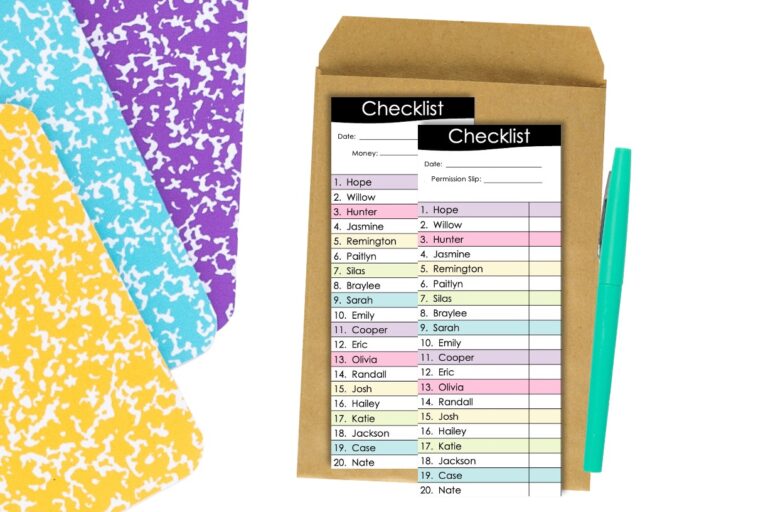
4. Transportation Arrangements
Book transportation well in advance with your school district. Determine how many buses are needed to transport all the students and teachers. Take into consideration how many students you will have per seat.
Will students bring their lunch, have a school lunch, or eat at a destination?
Once lunch has been determined, if students bring their own lunch, you will need to devise a plan to transport the lunches. Taking a cooler to keep food and drinks cold may be required.
6. Emergency Protocols
Develop a comprehensive plan for potential emergencies, including a schedule for check-ins and contacts. If you have parents attending who are serving as chaperones, share the plan with them and ensure everyone carries a list of important contacts.
Packing and Preparing for Success
7. teacher essentials.
A bag or backpack to carry all your stuff, a whistle, and contact numbers for the school secretary and principal nurse.
8. First Aid Kit
Carry a well-stocked first aid kit. Be prepared to handle common field trip injuries and ensure someone on the team is trained in basic first aid.
9. Medication Documentation
Bring a list of students with medical needs, along with their medications and instructions. You may need to administer medication during the trip, so have a clear protocol in place.
10. Dietary Requirements
Collect information on any student dietary restrictions and plan meals accordingly. Bring non-perishable snacks in case of delays.
11. Clothing Considerations
Remind students to dress appropriately for the weather and terrain of the destination.
12. Communication Devices
Carry fully charged cell phones or walkie-talkies for easy communication. If you are going to an area with poor reception, consider using other forms of communication, such as whistles.
13. Roll Call Sheet
Prepare a roll call sheet with the names of all students. Do a roll call before leaving the school and leaving the field trip destination to ensure everyone is accounted for.
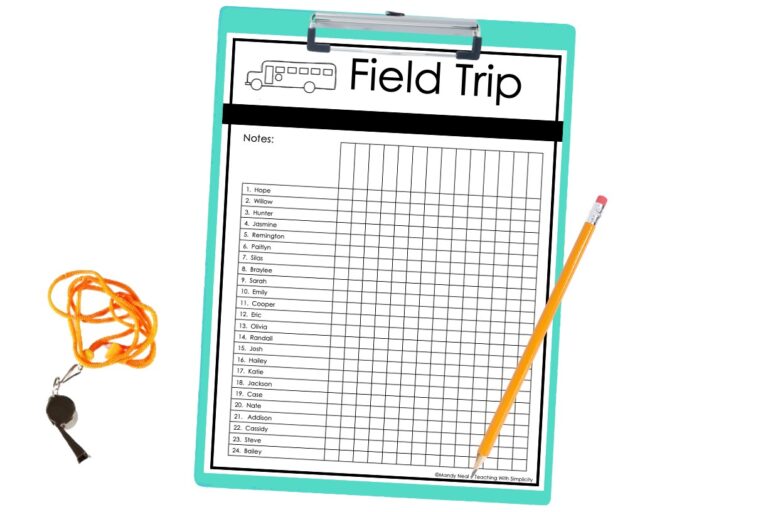
14. Field Trip Itinerary
Have a detailed itinerary outlining the trip’s timing—from departure to return. Share this with students, parents, and administration, and review it before and during the trip to maintain schedule adherence.
On the Day of the Trip
15. grouping plans.
Decide on the group sizes and designate leaders for each. Ensure each group has a chaperone and has received the necessary materials and guidance.
16. Student Expectations
Review behavioral expectations with the students, emphasizing the importance of respecting the venue, abiding by the safety rules, and listening to the instructions of their teachers and chaperones.
17. Bus Ride
On the bus ride to and from your destination, monitor your students’ behavior and voice levels so that the bus driver can safely transport them.
18. Sign-out sheet
If your school allows students to leave the field trip destination with parents, have a sign-out sheet prepared for parents to sign their students out.
19. Thank-You Notes
Show appreciation to the chaperones and any staff or guides at the field trip site. This strengthens the school’s relationship with community partners and sets an example for students to express gratitude.
Optional Items to Consider
- Name tags/lanyards for students
- Matching school shirts
- Remind students they can bring spending money.
- For you, get a good night’s sleep the night before!!
Conducting a successful field trip takes time, effort, and a lot of planning. With this checklist, you’re well-equipped to lead your students on an adventure that will impact their learning and memories.
SHOP THIS POST
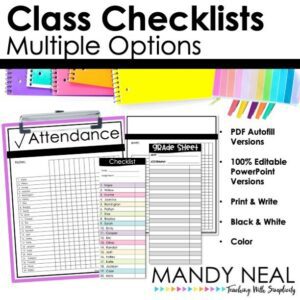
Editable Student Checklists

You may also enjoy these posts:
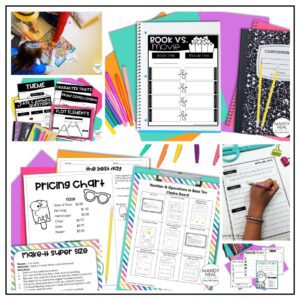
10 Engaging & Authentic Activities to Do After State Testing
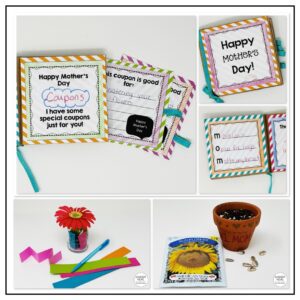
Crafting Memories for Mom: Fun and Unique Mother’s Day Gift Ideas for Upper Elementary Students
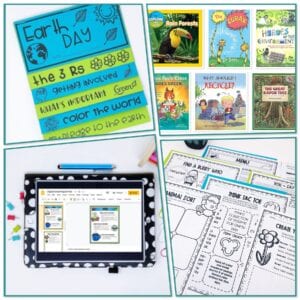
Earth Day Activities and Read Alouds
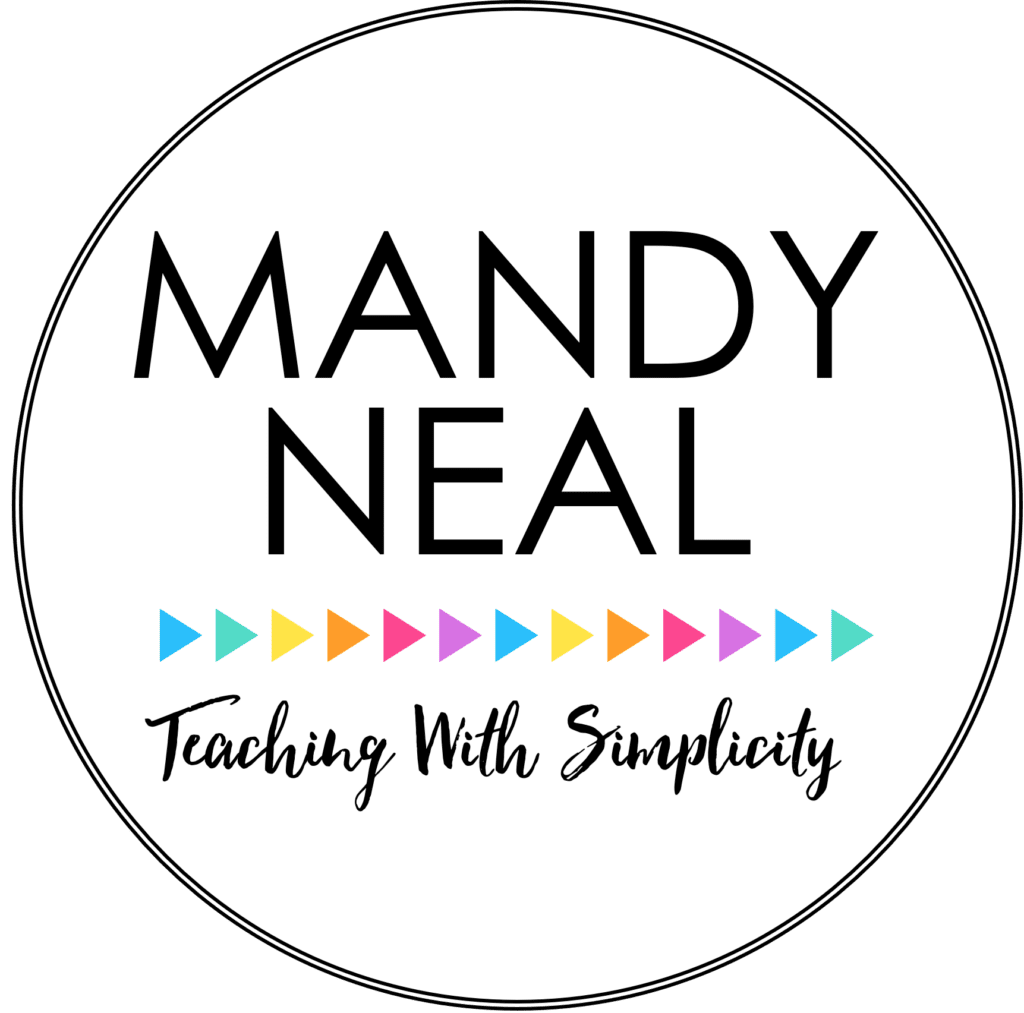
- COPYRIGHT © 2023 MBNeal, LLC
- ALL RIGHTS RESERVED
- PRIVACY POLICY
Sign up for Access to Exclusive Freebies
Sign up for over 25 exclusive freebies from Mandy Neal at Teaching With Simplicity!

FIND THE PERFECT FIELD TRIP
Search by geographic area.
- Hot Springs
- Little Rock
- Los Angeles
- San Francisco
- Statewide / Region
- Daytona Beach
- Fort Lauderdale
- Gainesville
- Jacksonville
- Orlando-Metro
- Palm Beach Metro
- Space Coast
- Tallahassee
- St. Augustine
- St Petersburg-Clearwater
- Atlanta-Metro
- Chicago-Metro
- Springfield
- Central Region
- East Region
- Indianapolis
- North Region
- South Central Region
- South Region
- West Region
- Bowling Green
- Baton Rouge
- New Orleans
- Baltimore-Metro
- The Berkshires
- Boston-Metro
- Cape Cod/Plymouth
- Greater Lowell
- Greater Springfield
- Capital-River Region
- Delta Region
- Gulf Coast Region
- Hills Region
- Pines Region
- Jefferson City
- Kansas City
- Springfield-MO
- Delaware River Region
- Gateway Region NJ
- Greater Atlantic City
- Shore Region
- Skylands Region
- Southern Shore Region
- Capital District Region
- Central New York Region
- Finger Lakes Region
- Hudson Valley Region
- Long Island
- Mohawk Valley Region
New York City
- North Country Region
- Southern Tier Region
- Western New York Region
- Metro Canton Ohio
- Cincinnati Ohio
- Cleveland Ohio
- Columbus Ohio
- Oklahoma City
- Allegheny Mts. & Valleys
- Gettysburg/York
- Harrisburg-Metro
- Lakes & Erie Regions
- Lancaster-Metro
- Lehigh Valley
- Philadelphia Metro
- Pittsburgh & Laurel Highlands
- The Poconos
- Scranton/Wilkes-Barre
- Chattanooga
- East Tennessee
- Middle Tennessee
- The Smokies
- West Tennessee
- Bryan - College Station
- Corpus Christi
- Dallas/Fort Worth
- Panhandle Plains Region
- San Antonio
- Central Virginia
- Chesapeake Bay Region
- Coastal Virginia -Eastern Shore
- Coastal Virginia-Hampton Roads
- Northern Virginia
- Shenandoah Valley
- Southern Virginia
- Southwest Virginia-Blue Ridge Highlands
- Southwest Virginia-Heart of the Appalachia
- Virginia Mountains
- Martinsburg
- Madison Wisconsin
SERVING SCHOOL, SCOUT, CAMP, AND HOMESCHOOL GROUPS FROM EARLY CHILDHOOD THROUGH COLLEGE
You Can Also Find
Featured field trips.
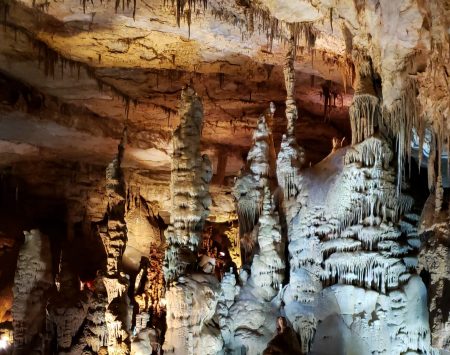
Cathedral Caverns State Park
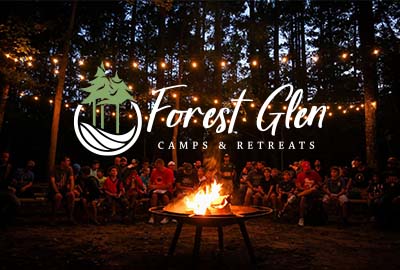
Forest Glen Camps & Retreats
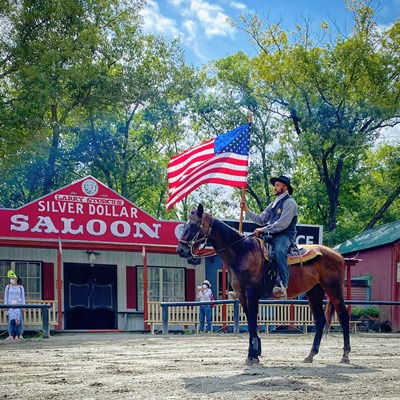
Wild West City
featured destinations

MASSACHUSETTS

SOUTH CAROLINA

featured field trips
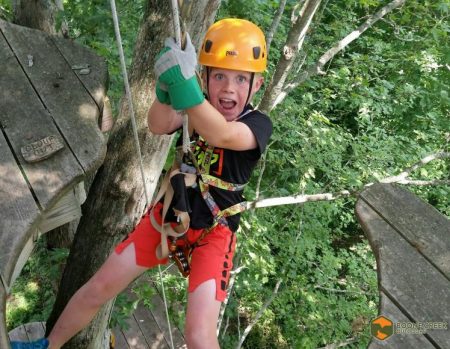
Boone Creek Outdoors
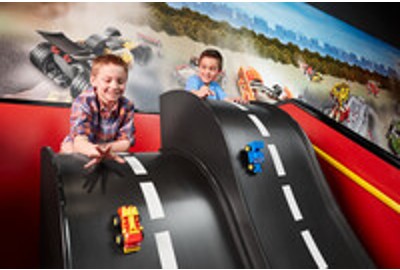
LEGOLAND Discovery Center Chicago
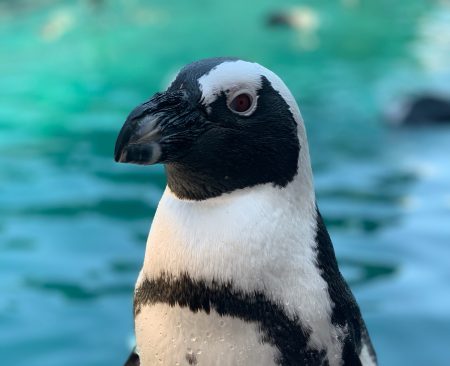
Long Island Aquarium
field trip lesson plans

Each month, we raffle a prize to show appreciation for your hard work with students, scouts, and campers. It’s Easy & Just A Click Away
This Month’s Prize is a $50 Amazon Card
SCHOOL ASSEMBLY & OUTREACH PROGRAMS

Dialed Action Sports

Awesome Laser Assemblies

DINOSAURS ROCK® & Other Science Fun
FUNDRAISING FOR FIELD TRIPS

Scholastic Book Fair

Flower Power Fundraising
FieldTripDirectory.com (formerly ClassTrips.com and CampDirectorsResources.com) offers field trip ideas for class trips, scout group trips, camp group field trips, and homeschool group field trips—early childhood through college. Search for class trips by geographic area, distance, and venue name or keyword. Day class trips are divided by curriculum and subject area:
- ARTS & ENTERTAINMENT Find art museums, theater, dance, and music concert field trips.
- EARLY CHILDHOOD Find class trips to children’s museums, petting zoos, and kids’ shows.
- HISTORY/SOCIAL STUDIES View history museums, government & civics, historic sites, living history museums, and multicultural field trip ideas.
- LIFE SKILLS Find team building field trips, health & safety exhibits, and character education experiences.
- SCIENCE & NATURE Find aquariums, botanical gardens, environmental studies & nature centers, farms & mazes, planetariums, science museums, STEAM & STEM field trips, dinosaur exhibits, and zoos.
- RECREATION Find field trip ideas for adventure parks, ropes courses, ziplines, boat excursions, amusement parks, waterparks, kayaking, rafting, tubing, laser tag paintball, roller skating rinks, ice-skating rinks, mini-golf attractions, indoor amusement & recreation centers, and outdoor amusement & recreation centers.
Overnight field trips include trips to NYC, trips to Boston, trips to Philadelphia, trips to Washington, DC, trips to Chicago, trips to Atlanta, trips to Austin, and other historic cities throughout the US. Retreats are available for environmental education, team building, and recreation. We created field trip lesson plans to help teachers, scout leaders, camp counselors, and homeschool parents provide an enriching experience for their groups. We know funds for class trips are limited, so we’ve included grants for field trips that cover admission, transportation, and more. It’s important that students and youth explore new environments, learn about other cultures, and develop an understanding of inclusivity as part of the educational process. People learn in different ways—through hearing, seeing, touching, talking, or doing. Class trips can provide a multi-dimensional learning experience. FieldTripDirectory.com can help you find the right trip for your group. A world of experiences is just a click away at FieldTripDirectory.com.
- Our Mission
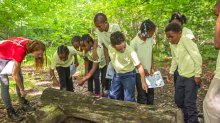
Yes, Field Trips Are Worth the Effort
Culturally enriching trips can boost grades and decrease absences and behavioral infractions, new research reveals.
As a teacher, Elena Aguilar often looked for opportunities to get her students out of the classroom and into different neighborhoods or natural environments. “We did the usual museum trips and science center stuff, but I loved the trips which pushed them into unfamiliar territory,” writes Aguilar , an instructional coach and author. Nudging kids out of their comfort zones, she says, “taught them about others as well as themselves. It helped them see the expansiveness of our world and perhaps inspired them to think about what might be available to them out there.”
Aguilar’s thinking made an impact: 15 years after traveling with her third-grade class to Yosemite National Park, a student contacted Aguilar on Facebook to thank her for the life-changing excursion. “You changed our lives with that trip,” the student wrote. “It's what made me want to be a teacher, to be able to give that same gift to other kids.”
As schools grapple with pandemic-related concerns about balancing in-seat instructional time with non-essentials like trips, new research published in The Journal of Human Resources argues that field trips, and the vital educational experiences that they provide—whether it’s a visit to a local museum or a big commitment like Aguilar’s national park trip—deliver a host of positive social and academic outcomes and are worth the effort.
“The pandemic should not keep schools from providing these essential cultural experiences forever,” asserts Jay P. Greene , one of the study’s co-authors and a senior research fellow at the Heritage Foundation, in an opinion piece for the Daily News . “If schools make culturally-enriching field trips an integral part of the education experience, all students—especially those whose parents have a harder time accessing these experiences on their own—would benefit.”
In the study, researchers assigned more than 1,000 fourth- and fifth-grade students in Atlanta to two groups. One group participated in three to six “culturally-enriching” field trips—visits to an art museum, a live theater performance, and a symphony concert—while students in the control group stayed put in class. The outcome? Kids in the field trip group “scored higher on end-of-grade exams, received higher course grades, were absent less often, and had fewer behavioral infractions,” compared to students in the control group, according to a ScienceDaily brief . Benefits lasted two to three years, Greene writes, and were “most visible when students were in middle school.”
“We are able to demonstrate that a relatively simple intervention—and we consider it pretty low-touch; three field trips in a year, maybe six field trips in two years—can actually have some substantial impacts,” says lead study author Heidi Holmes Erickson in an interview with The 74 . “They’re not just limited to social benefits. It shows that smaller interventions can actually have some significant effects on academics as well.”
Field trips aren’t a threat to in-class instruction, Erickson notes, they’re a tool to help bolster engagement and expand students’ horizons. “It's possible to expose students to a broader world and have a culturally enriching curriculum without sacrificing academic outcomes, and it may actually improve academic outcomes,” Erickson says. Far from harming test scores, the researchers found that culturally rich excursions reinforce academics and “students who participated in these field trips were doing better in class.”
Meanwhile, class trips don't need to be elaborate productions to make an impact: small excursions outside the classroom—"low-touch," as the researchers call them—can pack a punch. Here’s how three educators recommend dialing it back with low-stakes options that are both engaging and stimulating for students, but might not require days to prepare and plan:
Make Them Bite-Sized : Instead of allocating an entire day to a field trip, educational consultant Laurel Schwartz takes her classes on micro field trips , or “short outings that can be completed in a single class period.” These real-world encounters, she says, are especially beneficial for English learners and world language students. A micro field trip to a nearby park or around school grounds, for example, can be a great opportunity to “enhance a unit on nature and wildlife while reinforcing vocabulary for senses, colors, and the concepts of quantity and size,” Schwartz writes. “Afterwards, students might write descriptive stories set in the place you visited using vocabulary collected and defined together by the class.”
Try Teacher-Less Trips : To encourage exploration and learning outside of the classroom, former social studies teacher Arch Grieve removes himself from the equation with teacher-less field trips rooted in students’ local communities. Grieve only suggests options that are directly tied to a unit being discussed in class—like attending a talk at a local university or visiting a museum or cultural festival—and offers extra credit to incentivize students. “These trips allow for a greater appreciation of my subject matter than is possible in the school setting, and perhaps best of all, there's little to no planning involved.”
Explore Virtual Options : It may not be as fun as visiting in person, but the Internet makes it possible to visit museums like The National Gallery of London and The Vatican Museums without leaving the school building. Middle school English teacher Laura Bradley likes to search the Museums for Digital Learning website by topic, keyword, and grade level, to find lessons and activities that meet her unique curricular needs. The site grants access to digitized museum collections, 3D models, audio files, documents, images, and videos.

- The Journal
- Vol. 14, No. 1
The Educational Value of Field Trips
Jay P. Greene
Brian Kisida
Daniel H. Bowen
Jay P. Greene joined EdNext Editor-in-chief Marty West to discuss the benefits of field trips, including how seeing live theater is a more enriching experience to students, on the EdNext podcast .

Crystal Bridges; Crystal Bridges Museum of American Art; School Tour © 2013 Stephen Ironside/Ironside Photography Bo Bartlett – “The Box” – 2002 • Oil on Linen • 82 x 100 – Photographer is Karen Mauch
The school field trip has a long history in American public education. For decades, students have piled into yellow buses to visit a variety of cultural institutions, including art, natural history, and science museums, as well as theaters, zoos, and historical sites. Schools gladly endured the expense and disruption of providing field trips because they saw these experiences as central to their educational mission: schools exist not only to provide economically useful skills in numeracy and literacy, but also to produce civilized young men and women who would appreciate the arts and culture. More-advantaged families may take their children to these cultural institutions outside of school hours, but less-advantaged students are less likely to have these experiences if schools do not provide them. With field trips, public schools viewed themselves as the great equalizer in terms of access to our cultural heritage.
Today, culturally enriching field trips are in decline. Museums across the country report a steep drop in school tours. For example, the Field Museum in Chicago at one time welcomed more than 300,000 students every year. Recently the number is below 200,000. Between 2002 and 2007, Cincinnati arts organizations saw a 30 percent decrease in student attendance. A survey by the American Association of School Administrators found that more than half of schools eliminated planned field trips in 2010–11.
The decision to reduce culturally enriching field trips reflects a variety of factors. Financial pressures force schools to make difficult decisions about how to allocate scarce resources, and field trips are increasingly seen as an unnecessary frill. Greater focus on raising student performance on math and reading standardized tests may also lead schools to cut field trips. Some schools believe that student time would be better spent in the classroom preparing for the exams. When schools do organize field trips, they are increasingly choosing to take students on trips to reward them for working hard to improve their test scores rather than to provide cultural enrichment. Schools take students to amusement parks, sporting events, and movie theaters instead of to museums and historical sites. This shift from “enrichment” to “reward” field trips is reflected in a generational change among teachers about the purposes of these outings. In a 2012‒13 survey we conducted of nearly 500 Arkansas teachers, those who had been teaching for at least 15 years were significantly more likely to believe that the primary purpose of a field trip is to provide a learning opportunity, while more junior teachers were more likely to see the primary purpose as “enjoyment.”
If schools are de-emphasizing culturally enriching field trips, has anything been lost as a result? Surprisingly, we have relatively little rigorous evidence about how field trips affect students. The research presented here is the first large-scale randomized-control trial designed to measure what students learn from school tours of an art museum.
We find that students learn quite a lot. In particular, enriching field trips contribute to the development of students into civilized young men and women who possess more knowledge about art, have stronger critical-thinking skills, exhibit increased historical empathy, display higher levels of tolerance, and have a greater taste for consuming art and culture.
Design of the Study and School Tours
The 2011 opening of the Crystal Bridges Museum of American Art in Northwest Arkansas created the opportunity for this study. Crystal Bridges is the first major art museum to be built in the United States in the last four decades, with more than 50,000 square feet of gallery space and an endowment in excess of $800 million. Portions of the museum’s endowment are devoted to covering all of the expenses associated with school tours. Crystal Bridges reimburses schools for the cost of buses, provides free admission and lunch, and even pays for the cost of substitute teachers to cover for teachers who accompany students on the tour.
Because the tour is completely free to schools, and because Crystal Bridges was built in an area that never previously had an art museum, there was high demand for school tours. Not all school groups could be accommodated right away. So our research team worked with the staff at Crystal Bridges to assign spots for school tours by lottery. During the first two semesters of the school tour program, the museum received 525 applications from school groups representing 38,347 students in kindergarten through grade 12. We created matched pairs among the applicant groups based on similarity in grade level and other demographic factors. An ideal and common matched pair would be adjacent grades in the same school. We then randomly ordered the matched pairs to determine scheduling prioritization. Within each pair, we randomly assigned which applicant would be in the treatment group and receive a tour that semester and which would be in the control group and have its tour deferred.
We administered surveys to 10,912 students and 489 teachers at 123 different schools three weeks, on average, after the treatment group received its tour. The student surveys included multiple items assessing knowledge about art as well as measures of critical thinking, historical empathy, tolerance, and sustained interest in visiting art museums. Some groups were surveyed as late as eight weeks after the tour, but it was not possible to collect data after longer periods because each control group was guaranteed a tour during the following semester as a reward for its cooperation. There is no indication that the results reported below faded for groups surveyed after longer periods.
We also assessed students’ critical-thinking skills by asking them to write a short essay in response to a painting that they had not previously seen. Finally, we collected a behavioral measure of interest in art consumption by providing all students with a coded coupon good for free family admission to a special exhibit at the museum to see whether the field trip increased the likelihood of students making future visits.
All results reported below are derived from regression models that control for student grade level and gender and make comparisons within each matched pair, while taking into account the fact that students in the matched pair of applicant groups are likely to be similar in ways that we are unable to observe. Standard validity tests confirmed that the survey items employed to generate the various scales used as outcomes measured the same underlying constructs.
The intervention we studied is a modest one. Students received a one-hour tour of the museum in which they typically viewed and discussed five paintings. Some students were free to roam the museum following their formal tour, but the entire experience usually involved less than half a day. Instructional materials were sent to teachers who went on a tour, but our survey of teachers suggests that these materials received relatively little attention, on average no more than an hour of total class time. The discussion of each painting during the tour was largely student-directed, with the museum educators facilitating the discourse and providing commentary beyond the names of the work and the artist and a brief description only when students requested it. This format is now the norm in school tours of art museums. The aversion to having museum educators provide information about works of art is motivated in part by progressive education theories and by a conviction among many in museum education that students retain very little factual information from their tours.
Recalling Tour Details. Our research suggests that students actually retain a great deal of factual information from their tours. Students who received a tour of the museum were able to recall details about the paintings they had seen at very high rates. For example, 88 percent of the students who saw the Eastman Johnson painting At the Camp—Spinning Yarns and Whittling knew when surveyed weeks later that the painting depicts abolitionists making maple syrup to undermine the sugar industry, which relied on slave labor. Similarly, 82 percent of those who saw Norman Rockwell’s Rosie the Riveter could recall that the painting emphasizes the importance of women entering the workforce during World War II. Among students who saw Thomas Hart Benton’s Ploughing It Under , 79 percent recollected that it is a depiction of a farmer destroying his crops as part of a Depression-era price support program. And 70 percent of the students who saw Romare Bearden’s Sacrifice could remember that it is part of the Harlem Renaissance art movement. Since there was no guarantee that these facts would be raised in student-directed discussions, and because students had no particular reason for remembering these details (there was no test or grade associated with the tours), it is impressive that they could recall historical and sociological information at such high rates.
These results suggest that art could be an important tool for effectively conveying traditional academic content, but this analysis cannot prove it. The control-group performance was hardly better than chance in identifying factual information about these paintings, but they never had the opportunity to learn the material. The high rate of recall of factual information by students who toured the museum demonstrates that the tours made an impression. The students could remember important details about what they saw and discussed.
Critical Thinking. Beyond recalling the details of their tour, did a visit to an art museum have a significant effect on students? Our study demonstrates that it did. For example, students randomly assigned to receive a school tour of Crystal Bridges later displayed demonstrably stronger ability to think critically about art than the control group.
During the first semester of the study, we showed all 3rd- through 12th-grade students a painting they had not previously seen, Bo Bartlett’s The Box . We then asked students to write short essays in response to two questions: What do you think is going on in this painting? And, what do you see that makes you think that? These are standard prompts used by museum educators to spark discussion during school tours.
We stripped the essays of all identifying information and had two coders rate the compositions using a seven-item rubric for measuring critical thinking that was developed by researchers at the Isabella Stewart Gardner Museum in Boston. The measure is based on the number of instances that students engaged in the following in their essays: observing, interpreting, evaluating, associating, problem finding, comparing, and flexible thinking. Our measure of critical thinking is the sum of the counts of these seven items. In total, our research team blindly scored 3,811 essays. For 750 of those essays, two researchers scored them independently. The scores they assigned to the same essay were very similar, demonstrating that we were able to measure critical thinking about art with a high degree of inter-coder reliability.
We express the impact of a school tour of Crystal Bridges on critical-thinking skills in terms of standard-deviation effect sizes. Overall, we find that students assigned by lottery to a tour of the museum improve their ability to think critically about art by 9 percent of a standard deviation relative to the control group. The benefit for disadvantaged groups is considerably larger (see Figure 1). Rural students, who live in towns with fewer than 10,000 people, experience an increase in critical-thinking skills of nearly one-third of a standard deviation. Students from high-poverty schools (those where more than 50 percent of students receive free or reduced-price lunches) experience an 18 percent effect-size improvement in critical thinking about art, as do minority students.

A large amount of the gain in critical-thinking skills stems from an increase in the number of observations that students made in their essays. Students who went on a tour became more observant, noticing and describing more details in an image. Being observant and paying attention to detail is an important and highly useful skill that students learn when they study and discuss works of art. Additional research is required to determine if the gains in critical thinking when analyzing a work of art would transfer into improved critical thinking about other, non-art-related subjects.
Historical Empathy. Tours of art museums also affect students’ values. Visiting an art museum exposes students to a diversity of ideas, peoples, places, and time periods. That broadening experience imparts greater appreciation and understanding. We see the effects in significantly higher historical empathy and tolerance measures among students randomly assigned to a school tour of Crystal Bridges.
Historical empathy is the ability to understand and appreciate what life was like for people who lived in a different time and place. This is a central purpose of teaching history, as it provides students with a clearer perspective about their own time and place. To measure historical empathy, we included three statements on the survey with which students could express their level of agreement or disagreement: 1) I have a good understanding of how early Americans thought and felt; 2) I can imagine what life was like for people 100 years ago; and 3) When looking at a painting that shows people, I try to imagine what those people are thinking. We combined these items into a scale measuring historical empathy.
Students who went on a tour of Crystal Bridges experience a 6 percent of a standard deviation increase in historical empathy. Among rural students, the benefit is much larger, a 15 percent of a standard deviation gain. We can illustrate this benefit by focusing on one of the items in the historical empathy scale. When asked to agree or disagree with the statement, “I have a good understanding of how early Americans thought and felt,” 70 percent of the treatment-group students express agreement compared to 66 percent of the control group. Among rural participants, 69 percent of the treatment-group students agree with this statement compared to 62 percent of the control group. The fact that Crystal Bridges features art from different periods in American history may have helped produce these gains in historical empathy.
Tolerance. To measure tolerance we included four statements on the survey to which students could express their level of agreement or disagreement: 1) People who disagree with my point of view bother me; 2) Artists whose work is critical of America should not be allowed to have their work shown in art museums; 3) I appreciate hearing views different from my own; and 4) I think people can have different opinions about the same thing. We combined these items into a scale measuring the general effect of the tour on tolerance.
Overall, receiving a school tour of an art museum increases student tolerance by 7 percent of a standard deviation. As with critical thinking, the benefits are much larger for students in disadvantaged groups. Rural students who visited Crystal Bridges experience a 13 percent of a standard deviation improvement in tolerance. For students at high-poverty schools, the benefit is 9 percent of a standard deviation.
The improvement in tolerance for students who went on a tour of Crystal Bridges can be illustrated by the responses to one of the items within the tolerance scale. When asked about the statement, “Artists whose work is critical of America should not be allowed to have their work shown in art museums,” 35 percent of the control-group students express agreement. But for students randomly assigned to receive a school tour of the art museum, only 32 percent agree with censoring art critical of America. Among rural students, 34 percent of the control group would censor art compared to 30 percent for the treatment group. In high-poverty schools, 37 percent of the control-group students would censor compared to 32 percent of the treatment-group students. These differences are not huge, but neither is the intervention. These changes represent the realistic improvement in tolerance that results from a half-day experience at an art museum.
Interest in Art Museums. Perhaps the most important outcome of a school tour is whether it cultivates an interest among students in returning to cultural institutions in the future. If visiting a museum helps improve critical thinking, historical empathy, tolerance, and other outcomes not measured in this study, then those benefits would compound for students if they were more likely to frequent similar cultural institutions throughout their life. The direct effects of a single visit are necessarily modest and may not persist, but if school tours help students become regular museum visitors, they may enjoy a lifetime of enhanced critical thinking, tolerance, and historical empathy.
We measured how school tours of Crystal Bridges develop in students an interest in visiting art museums in two ways: with survey items and a behavioral measure. We included a series of items in the survey designed to gauge student interest:
• I plan to visit art museums when I am an adult.
• I would tell my friends they should visit an art museum.
• Trips to art museums are interesting.
• Trips to art museums are fun.
• Would your friend like to go to an art museum on a field trip?
• Would you like more museums in your community?
• How interested are you in visiting art museums?
• If your friends or family wanted to go to an art museum, how interested would you be in going?
Interest in visiting art museums among students who toured the museum is 8 percent of a standard deviation higher than that in the randomized control group. Among rural students, the increase is much larger: 22 percent of a standard deviation. Students at high-poverty schools score 11 percent of a standard deviation higher on the cultural consumer scale if they were randomly assigned to tour the museum. And minority students gain 10 percent of a standard deviation in their desire to be art consumers.
One of the eight items in the art consumer scale asked students to express the extent to which they agreed or disagreed with the statement, “I would tell my friends they should visit an art museum.” For all students who received a tour, 70 percent agree with this statement, compared to 66 percent in the control group. Among rural participants, 73 percent of the treatment-group students agree versus 63 percent of the control group. In high-poverty schools, 74 percent would recommend art museums to their friends compared to 68 percent of the control group. And among minority students, 72 percent of those who received a tour would tell their friends to visit an art museum, relative to 67 percent of the control group. Students, particularly those from disadvantaged backgrounds, are more likely to have positive feelings about visiting museums if they receive a school tour.
We also measured whether students are more likely to visit Crystal Bridges in the future if they received a school tour. All students who participated in the study during the first semester, including those who did not receive a tour, were provided with a coupon that gave them and their families free entry to a special exhibit at Crystal Bridges. The coupons were coded so that we could determine the applicant group to which students belonged. Students had as long as six months after receipt of the coupon to use it.
We collected all redeemed coupons and were able to calculate how many adults and youths were admitted. Though students in the treatment group received 49 percent of all coupons that were distributed, 58 percent of the people admitted to the special exhibit with those coupons came from the treatment group. In other words, the families of students who received a tour were 18 percent more likely to return to the museum than we would expect if their rate of coupon use was the same as their share of distributed coupons.
This is particularly impressive given that the treatment-group students had recently visited the museum. Their desire to visit a museum might have been satiated, while the control group might have been curious to visit Crystal Bridges for the first time. Despite having recently been to the museum, students who received a school tour came back at higher rates. Receiving a school tour cultivates a taste for visiting art museums, and perhaps for sharing the experience with others.
Disadvantaged Students
One consistent pattern in our results is that the benefits of a school tour are generally much larger for students from less-advantaged backgrounds. Students from rural areas and high-poverty schools, as well as minority students, typically show gains that are two to three times larger than those of the total sample. Disadvantaged students assigned by lottery to receive a school tour of an art museum make exceptionally large gains in critical thinking, historical empathy, tolerance, and becoming art consumers.
It appears that the less prior exposure to culturally enriching experiences students have, the larger the benefit of receiving a school tour of a museum. We have some direct measures to support this explanation. To isolate the effect of the first time visiting the museum, we truncated our sample to include only control-group students who had never visited Crystal Bridges and treatment-group students who had visited for the first time during their tour. The effect for this first visit is roughly twice as large as that for the overall sample, just as it is for disadvantaged students.
In addition, we administered a different version of our survey to students in kindergarten through 2nd grade. Very young students are less likely to have had previous exposure to culturally enriching experiences. Very young students make exceptionally large improvements in the observed outcomes, just like disadvantaged students and first-time visitors.
When we examine effects for subgroups of advantaged students, we typically find much smaller or null effects. Students from large towns and low-poverty schools experience few significant gains from their school tour of an art museum. If schools do not provide culturally enriching experiences for these students, their families are likely to have the inclination and ability to provide those experiences on their own. But the families of disadvantaged students are less likely to substitute their own efforts when schools do not offer culturally enriching experiences. Disadvantaged students need their schools to take them on enriching field trips if they are likely to have these experiences at all.
Policy Implications
School field trips to cultural institutions have notable benefits. Students randomly assigned to receive a school tour of an art museum experience improvements in their knowledge of and ability to think critically about art, display stronger historical empathy, develop higher tolerance, and are more likely to visit such cultural institutions as art museums in the future. If schools cut field trips or switch to “reward” trips that visit less-enriching destinations, then these important educational opportunities are lost. It is particularly important that schools serving disadvantaged students provide culturally enriching field trip experiences.
This first-ever, large-scale, random-assignment experiment of the effects of school tours of an art museum should help inform the thinking of school administrators, educators, policymakers, and philanthropists. Policymakers should consider these results when deciding whether schools have sufficient resources and appropriate policy guidance to take their students on tours of cultural institutions. School administrators should give thought to these results when deciding whether to use their resources and time for these tours. And philanthropists should weigh these results when deciding whether to build and maintain these cultural institutions with quality educational programs. We don’t just want our children to acquire work skills from their education; we also want them to develop into civilized people who appreciate the breadth of human accomplishments. The school field trip is an important tool for meeting this goal.
Jay P. Greene is professor of education reform at the University of Arkansas, where Brian Kisida is a senior research associate and Daniel H. Bowen is a doctoral student.
Additional materials, including a supplemental study and a methodological appendix , are available.
For more, please see “ The Top 20 Education Next Articles of 2023 .”
This article appeared in the Winter 2014 issue of Education Next . Suggested citation format:
Greene, J.P., Kisida, B., and Bowen, D.H. (2014). The Educational Value of Field Trips: Taking students to an art museum improves critical thinking skills, and more . Education Next , 14(1), 78-86.
Last Updated
License this Content
Latest Issue
Spring 2024.
Vol. 24, No. 2
We Recommend You Read
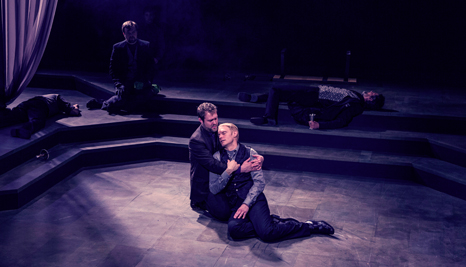
Learning from Live Theater
Students realize gains in knowledge, tolerance, and more
by Jay P. Greene
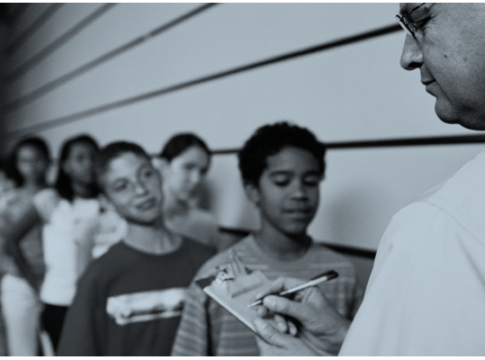
Getting Ahead by Staying Behind
An evaluation of Florida’s program to end social promotion
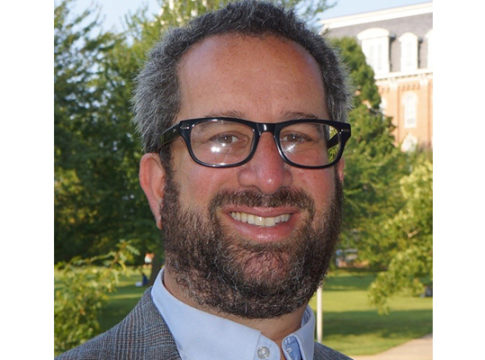
Straight Up Conversation: Scholar Jay Greene on the Importance of Field Trips
by Frederick Hess
- More from M-W
- To save this word, you'll need to log in. Log In
Definition of field trip
Examples of field trip in a sentence.
These examples are programmatically compiled from various online sources to illustrate current usage of the word 'field trip.' Any opinions expressed in the examples do not represent those of Merriam-Webster or its editors. Send us feedback about these examples.
Word History
1926, in the meaning defined above
Dictionary Entries Near field trip
field trial
Cite this Entry
“Field trip.” Merriam-Webster.com Dictionary , Merriam-Webster, https://www.merriam-webster.com/dictionary/field%20trip. Accessed 6 Jun. 2024.
Kids Definition
Kids definition of field trip, more from merriam-webster on field trip.
Thesaurus: All synonyms and antonyms for field trip
Subscribe to America's largest dictionary and get thousands more definitions and advanced search—ad free!

Can you solve 4 words at once?
Word of the day.
See Definitions and Examples »
Get Word of the Day daily email!
Popular in Grammar & Usage
What's the difference between 'fascism' and 'socialism', more commonly misspelled words, commonly misspelled words, how to use em dashes (—), en dashes (–) , and hyphens (-), absent letters that are heard anyway, popular in wordplay, 8 words for lesser-known musical instruments, the words of the week - may 31, 9 superb owl words, 10 words for lesser-known games and sports, etymologies for every day of the week, games & quizzes.

- Venue Rentals
- Traveling Exhibitions
- Sue the T-Rex
Field Trips
Give students a fresh spin on science and social studies lessons with a day outside the classroom.
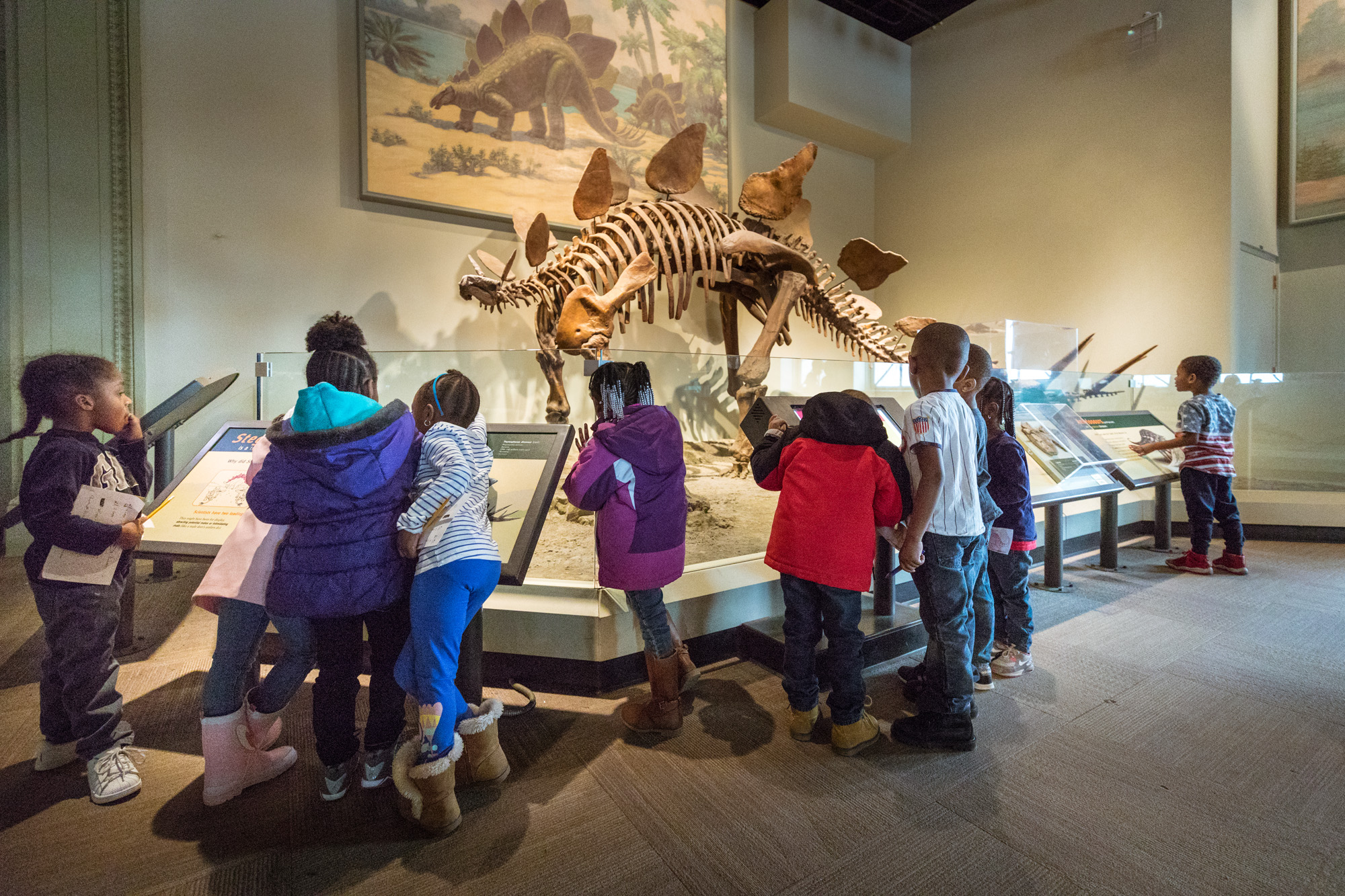
Pre-Registered Illinois field trips are FREE everyday of the week!
The Field Museum’s field trip experiences offer exciting, up-close exposure to science and social studies in a historic Chicago setting. Schools and community groups in Illinois serving Pre-K–12th grade students can register for a FREE field trip by completing this form at least 14 days before your desired visit date. There is no charge for additional chaperones for Illinois schools.
School groups can enjoy a deep dive into Ancient American cultures or watch groundbreaking DNA research happen before their eyes. Students learn about evolution through fossils and dinosaur skeletons and discover what centuries-old specimens and artifacts can teach us about how we live today.
A journey through the Field Museum’s diverse range of exhibitions is easily tailored to curricula for groups of all ages, including pre-K, elementary school, middle school, and high school students. All school groups are welcome, including home school students.
We also offer engaging and hands-on classes for students on field trips! Field trip classes are available for grades Pre-K-12th and focus on a range of topics. For a list of class offerings and more information please check out our Class Catalog.
To begin planning a field trip, please fill out the online registration form 14 days before your desired visit date.
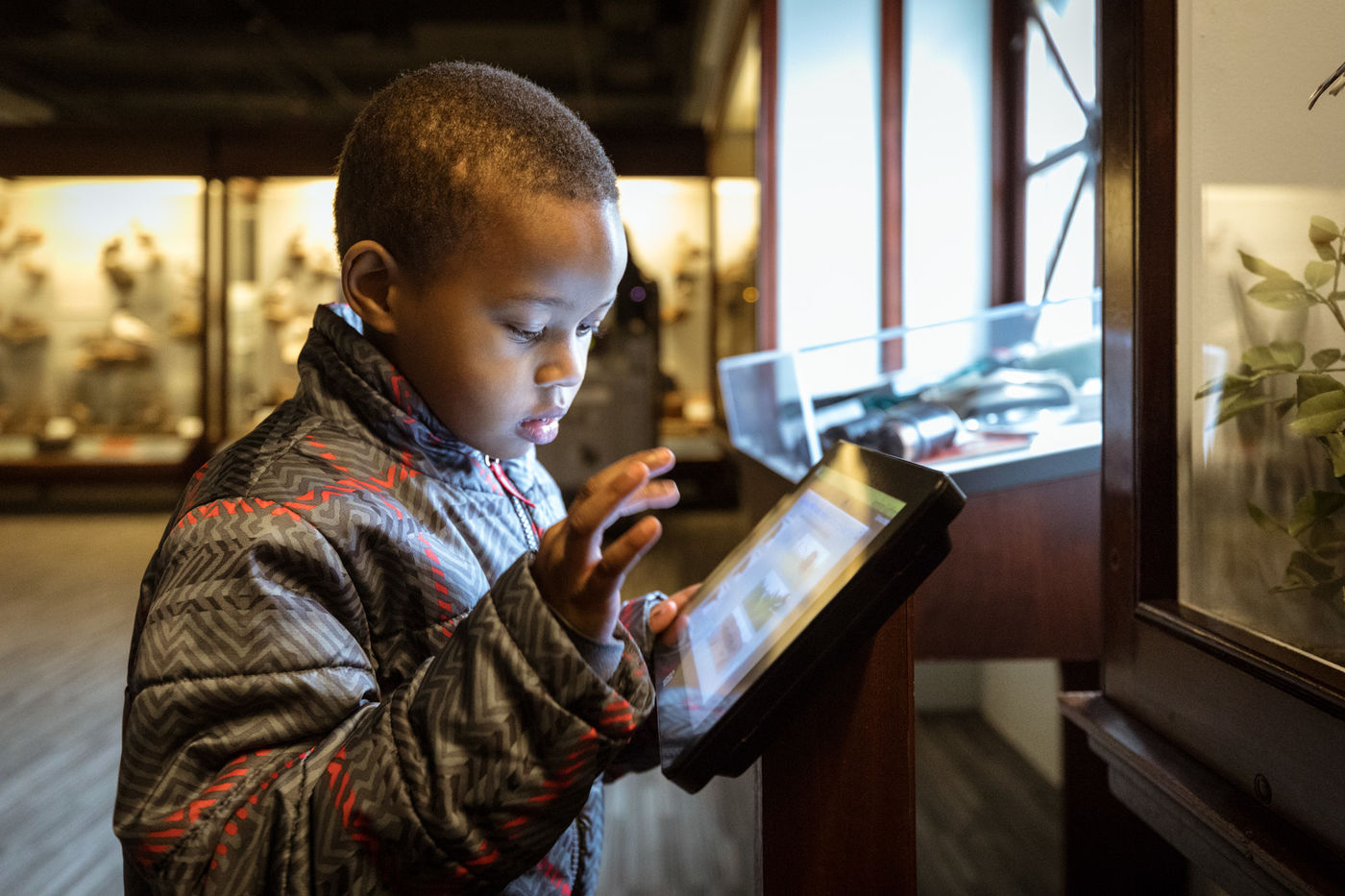
Field Trip Pricing
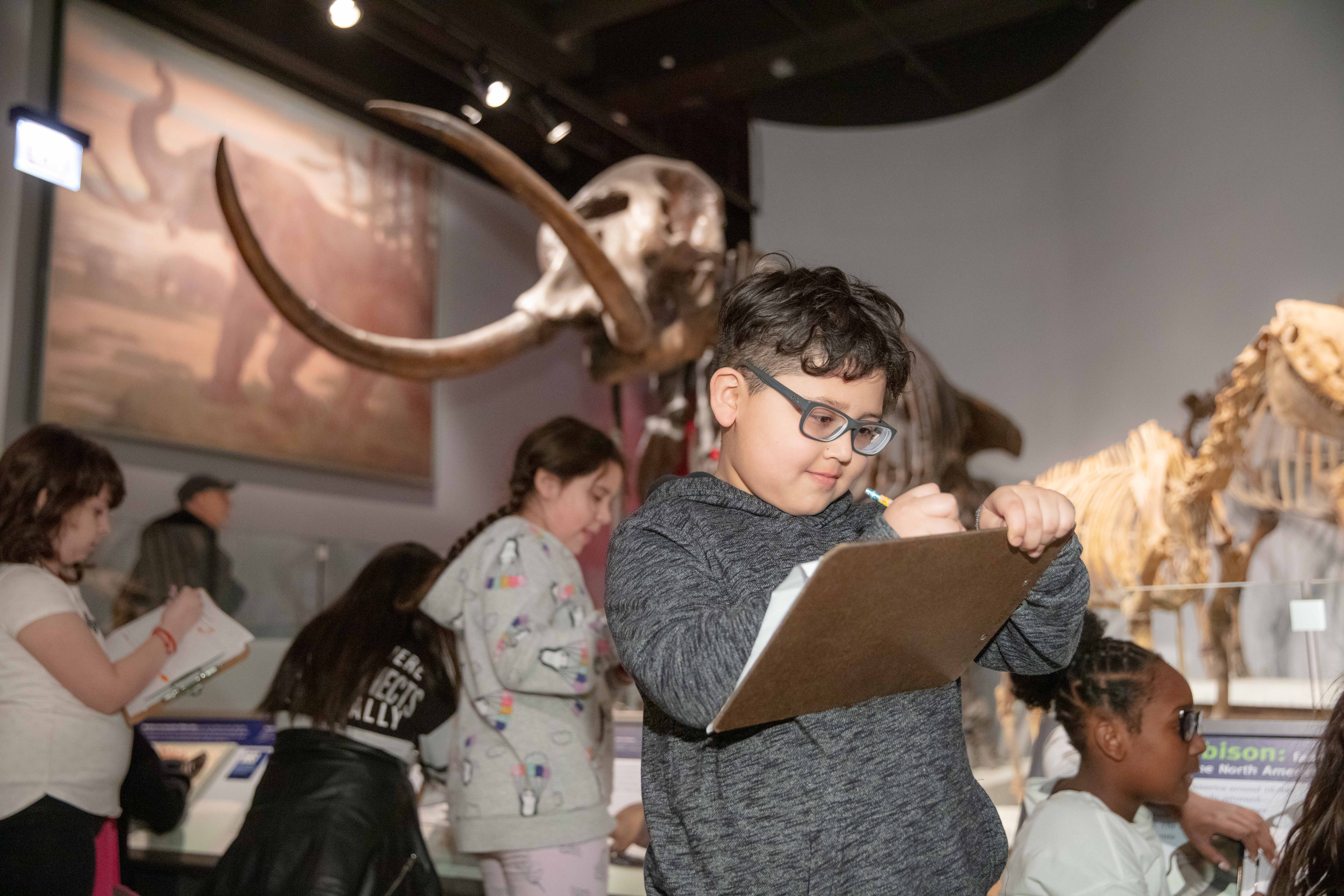
Field Trip Experiences
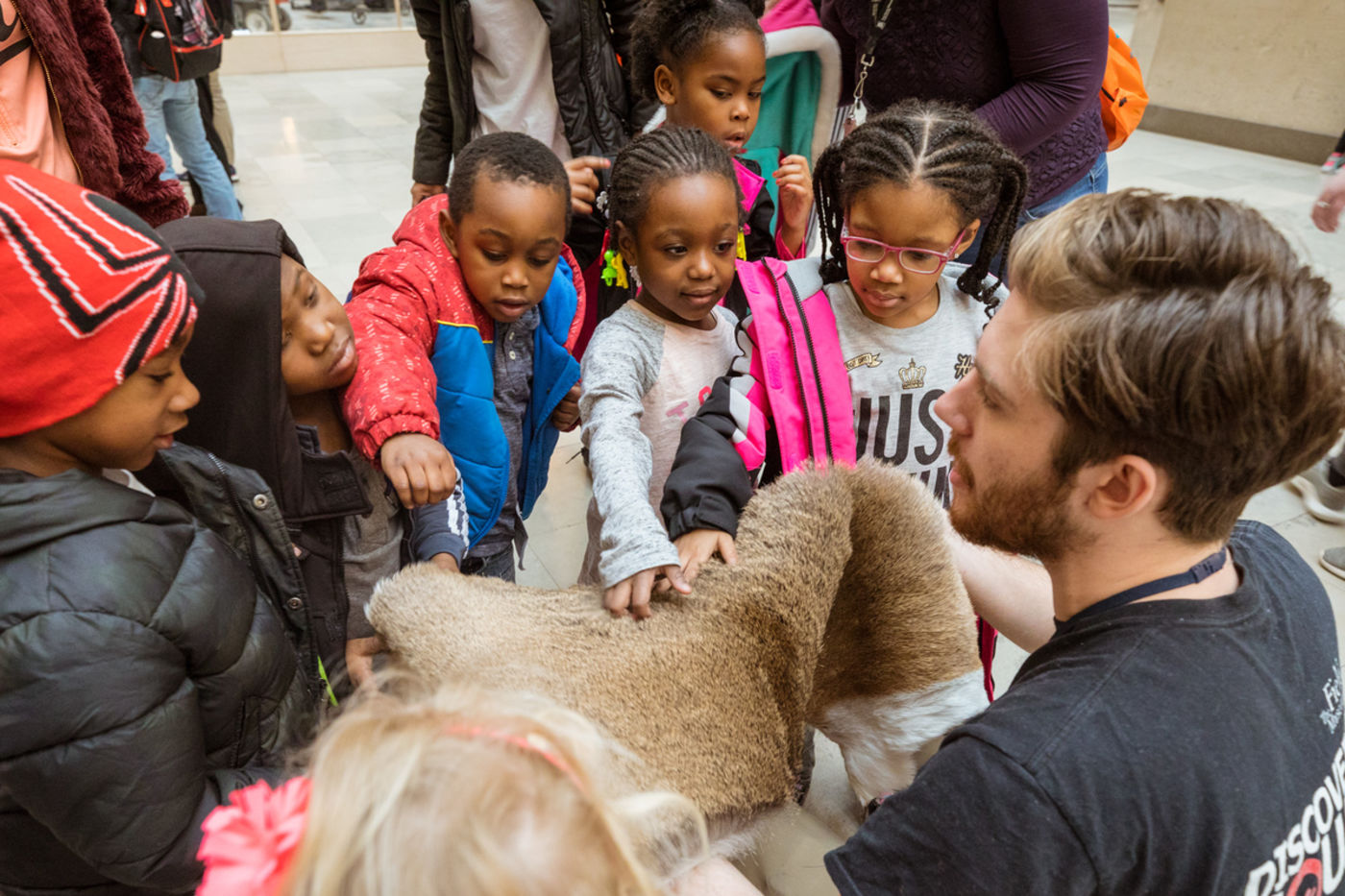
Field Trip Policies
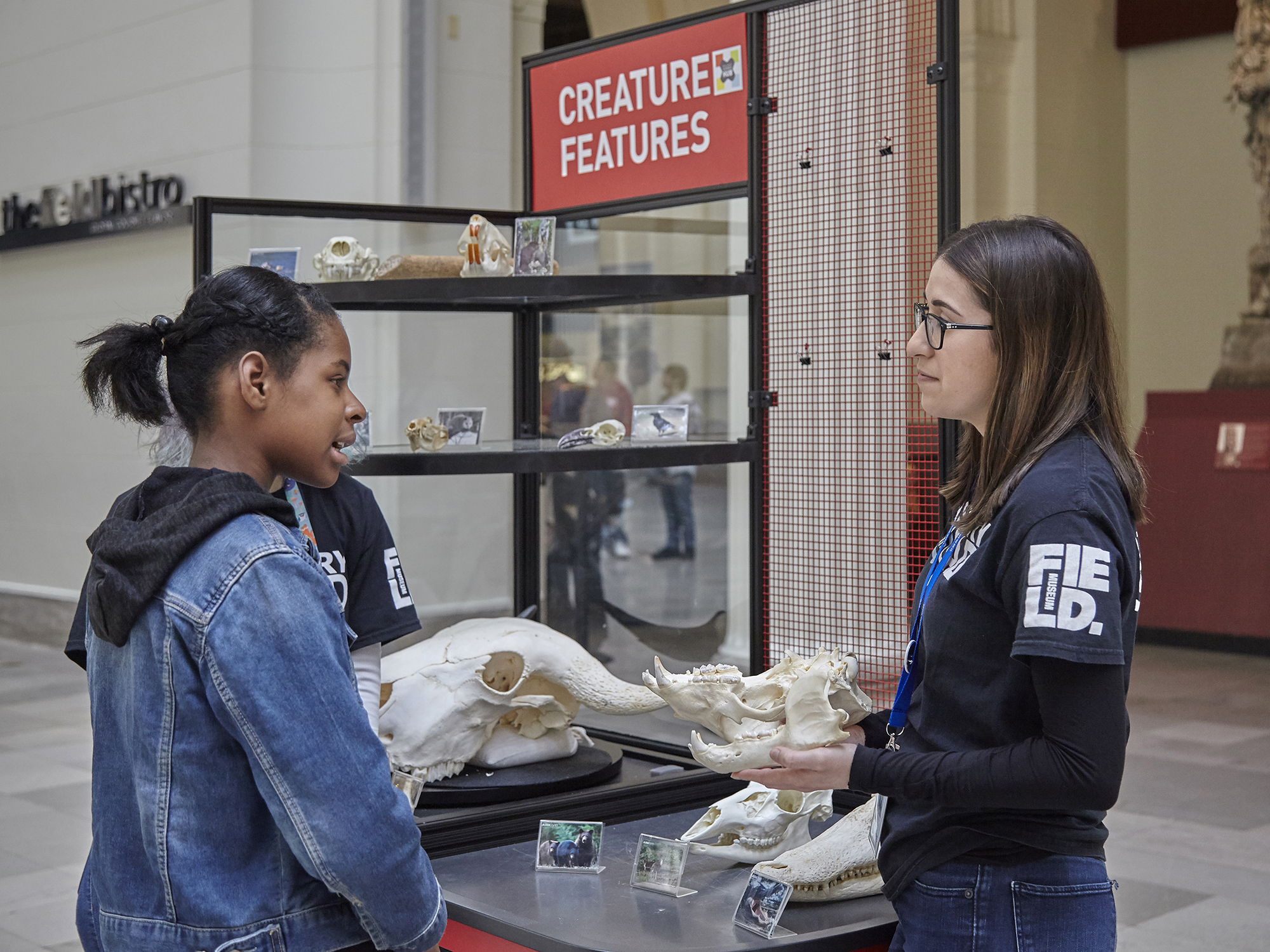
Field Trip Guides
Virtual learning experiences.

SUE the T. rex Virtual Tour for Classrooms

Dino or DiNOT Virtual Tour
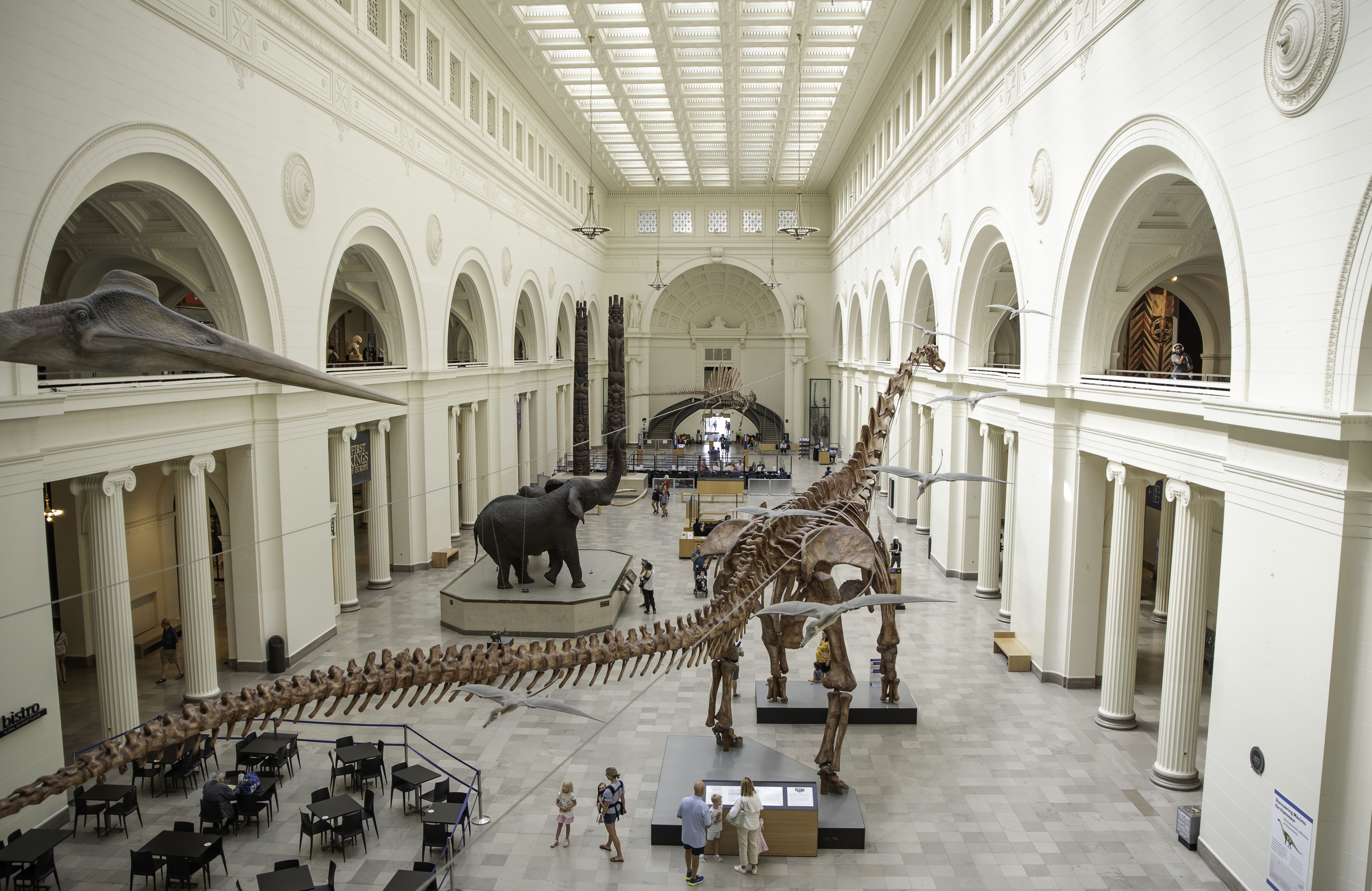
360 Virtual Museum Tours
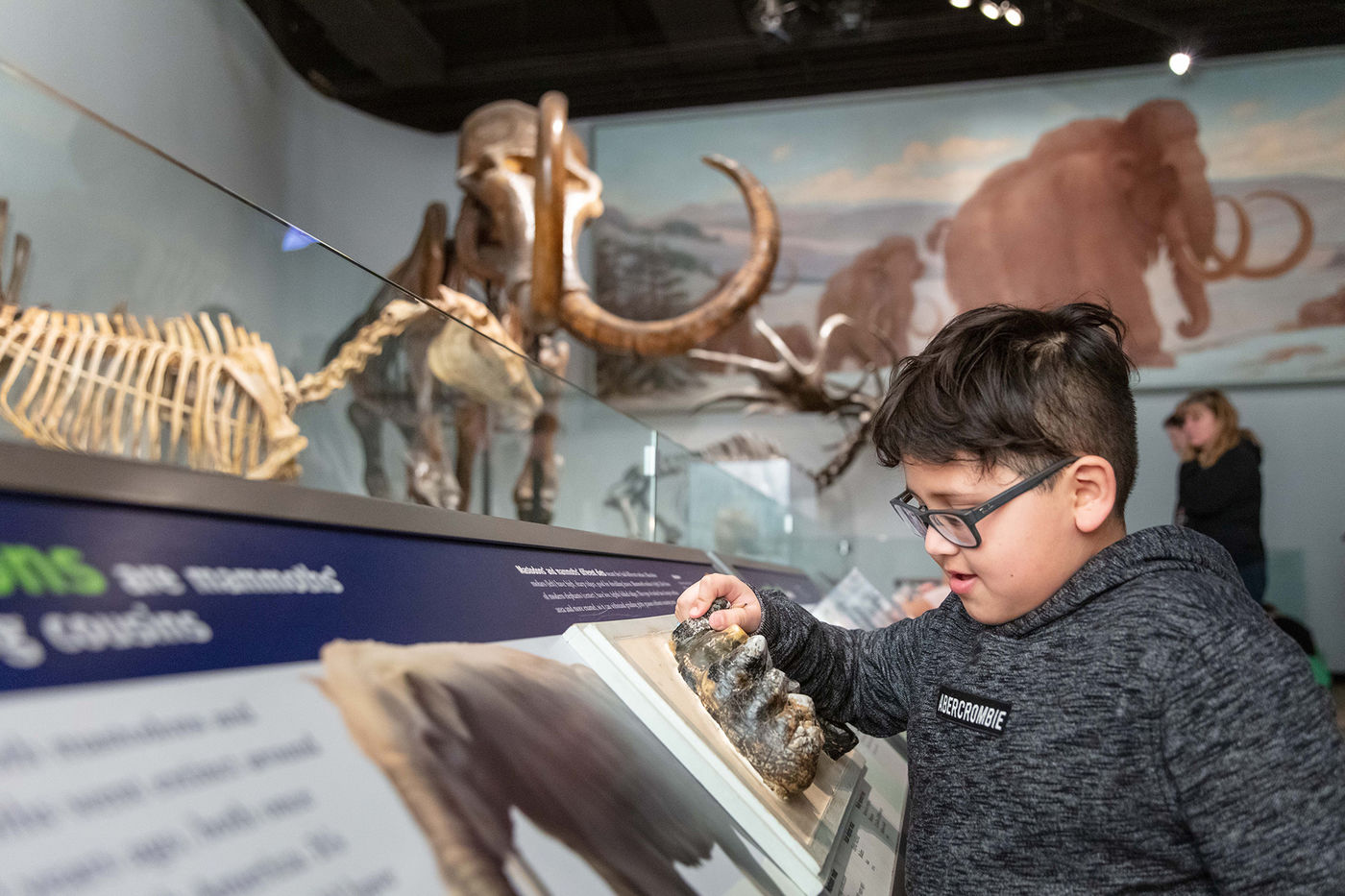
Learning Resources
Acknowledgments.
School learning experiences are supported by ITW.

Field Trips: Pros and Cons
Off-campus excursions can enhance learning, but they pose challenges
- Tips & Strategies
- An Introduction to Teaching
- Policies & Discipline
- Community Involvement
- School Administration
- Technology in the Classroom
- Teaching Adult Learners
- Issues In Education
- Teaching Resources
- Becoming A Teacher
- Assessments & Tests
- Elementary Education
- Secondary Education
- Special Education
- Homeschooling
- M.Ed., Curriculum and Instruction, University of Florida
- B.A., History, University of Florida
Are field trips worth all the time and effort required to make them successful? Most teachers have asked themselves this question at one time or another, typically when feeling overwhelmed as they prepare for a field trip. The truth is that field trips at any grade level can cause quite a few headaches for teachers. At the same time, well-planned field trips can provide students with truly educational experiences they cannot get in the confines of the classroom. Following is a look at the pros and cons of field trips.
Benefits of Field Trips
Field trips provide students with new opportunities for learning through experience:
Different Learning Modalities
Information is presented to students in a way that meets different learning modalities. Field trips provide students with the ability to learn by doing instead of just passively listening to the information being taught in class.
Students are exposed to new experiences that, hopefully, broaden their horizons. This can be especially helpful for students from lower socioeconomic backgrounds who may not have been exposed to these opportunities before.
Reinforcing Concepts
Concepts that have already been learned in the classroom can be reinforced. Sometimes seeing information being taught in a new way can make a big difference in student comprehension. There is quite a difference between being taught about something like hurricanes and wind speed and experiencing them in an exhibit at a science museum.
Shared Reference
Students are provided with shared reference points that teachers can then refer to and use in future lessons. There may be an opportunity to have two or more disciplines use a field trip as an enrichment activity. For example, a trip to an art museum (art) may couple with a timeline for social studies (political systems in place when art was created) or math (measurements) can combine with science in a biosystem (river, beach, and meadow). In this manner, several teachers can then refer to things that students saw and experienced during the field trip for the remainder of the school year.
Increased Student-Teacher Communication
Students and teachers can see each other in a different light, helping to increase communication between them. Some students who might be overlooked in class because they are quiet might really come alive on field trips.
If parents are involved as chaperones, they can feel more connected to the teacher and the lessons being taught. They can get to know the teacher better and understand what teachers deal with daily.
Meeting Standards
Standards in social studies and science require students to have experiences related to concepts in the discipline. In social studies, students are required to take informed action. In science, students need to be exposed to a series of concepts to help them to better understand the world around them. Field trips help teachers meet these objectives.
Problems With Field Trips
Teachers face a number of concerns and challenges when designing field trips that they need to recognize and address before planning a field trip.
Preparation Needed
Field trips take preparation if teachers want to make them meaningful. They have to coordinate locations and transportation. They also need to create an effective lesson plan that they will follow when on the excursion.
Students will be out of the school building for a field trip, which means they will miss other classes—at least in middle and high school. If each core subject area (ELA, math science, or social studies) offers one field trip during a school year, students would be out of the building for four days. School attendance policies may count these as excused absences, but any field trip that removes students from class reduces the number of classroom hours.
Trips Can Be Costly
Field trips can be expensive, and some students may not have the funds to attend. Organizers of the field trip may consider asking for parents to add a few dollars to help students in need. School boosters may need to host a fundraiser for students to raise money for more expensive trips.
Teachers have to organize the collection of money and the assigning of chaperones. Teachers need to spend some time creating student groups that work for all students and ensuring that chaperones are assigned accordingly.
Teachers will likely have to deal with red tape as they plan field trips including permission slips, medical information, and emergency procedures. Schools typically require paperwork from teachers and their students.
Potential Discipline Problems
Students will be placed in a larger environment than the classroom. New surroundings could possibly lead to additional discipline problems. Because teachers typically only lead a small group (such as 30 to 40 students), they may not be able to maintain control over the behavior of every student on the field trip, especially if the group is large. Teachers should go over rules and expectations before the field trip, enforce the rules strictly while away from school grounds, and create effective consequences for misbehavior.
May Be Disappointing
The field trip destination might not live up to the teacher's expectations. The location might not be as interesting as the teacher thought it would be. The time to complete the field trip might be considerably less than was expected. Therefore, it is a good idea to have some contingency plan in mind just in case.
There may be students who, for one reason or another, will not attend the field trip. Teachers must leave lessons, usually enrichment offerings, that mirror some of the concepts being experienced on the field trip.
Requesting Feedback
One of the best ways to measure the success of a field trip (other than returning all students back to the school) is to ask for feedback. Teachers can post a survey for participants and for other chaperones asking them to express how they would evaluate the trip.
Opportunity to Reflect
Students should have the opportunity to reflect on the trip and write a response in a journal or essay. Requiring journal responses after the trip can solidify the information learned as students reflect on their new experiences. Asking students to write a thank you to the school principal for allowing the trip may even smooth the path to additional field trips.
Worth the Difficulties
Many teachers feel that well-chosen field trip destinations are worth the difficulties they may create. The key is taking the time to plan each aspect as much as possible. Teachers should be proactive when thinking about and planning field trips. Students, on the other hand, may remember the experience of the school field trip as a highlight of the school year, and the time they learned more than anything taught in class.
- How to Have a Safe, Fun, and Successful Field Trip
- Pros and Cons of Teaching
- The Pros and Cons of Block Schedules
- What Are Some Pros and Cons of the Common Core State Standards?
- Pros and Cons to Flexible Grouping in Middle and High School
- Parents Guide to the Pros and Cons of Homeschooling
- Whole Group Discussion Pros and Cons
- Job Sharing for Teachers
- How Scaffolding Instruction Can Improve Comprehension
- How to Avoid Common Mistakes When Writing Learning Objectives
- 7 Back to School Tips for Teachers
- 11 Pros and Cons of Using Movies in Class
- 10 Pros and Cons of Being a School Principal
- 7 Ways to Take Control of Your Classroom to Reduce Student Misbehavior
- Methods for Presenting Subject Matter
- Advantages and Disadvantages of Lecturing

Introducing “Field Trip”
Journey through the messy past and uncertain future of America’s national parks. The Washington Post’s Lillian Cunningham ventures off the marked trail to better understand the most urgent stories playing out in five iconic landscapes today.

The Washington Post’s Lillian Cunningham journeys through the messy past and uncertain future of America’s national parks. In trips through five iconic landscapes, she ventures off the marked trail and beyond the parks’ borders to better understand the most urgent stories playing out in these places today. Along the way, she meets the people fighting to help these parks evolve – and survive.

Yosemite National Park
Lillian begins her journey in the place that helped inspire the national parks. As wildfires threaten Yosemite’s giant sequoias, she asks what it will take to correct past mistakes and ensure the survival of these ancient trees.

Glacier National Park
Lillian experiences the rush of Glacier’s Going-to-the-Sun Road, but her most illuminating stops happen on the Blackfeet reservation. As Native people push for a greater hand in managing national park lands, Lillian asks whether that could ever happen.

Everglades National Park
Lillian slogs through the marsh and steps back in time to explore how past mistakes devastated the “River of Grass.” What will it take to restore this unique landscape of water and sky? Along the way, the park’s wildlife has a thing or two to say.

White Sands National Park
Lillian climbs the dunes for a view of a park imprinted with ancient human history and the beginnings of the Atomic Age. In doing so, she tries to understand why America’s deserts have been both safeguarded and sacrificed.

More podcasts

- Share full article
Advertisement
Supported by
Film Club: ‘The Field Trip’
What do you know about the world of work that awaits you?
The Field Trip
Through a day of role-playing, a group of students get an eye-opening introduction to the careers that may await them..
“P, F, L, P, F, E.” “Good morning, citizens. Welcome to JA BizTown, where you are running a town for a day. Raise your hand if you want to be successful today. Awesome. So I need my C.F.O.s, those are my chief financial officers. Please stand up. C.F.O.s, you are in charge of every single dollar that goes in or comes out of your business. That is a pretty big job. Now, each one of your teachers put you in this position because they believe that you’re ready for this level of responsibility. C.F.O.s, please walk to your business. Everybody else, let’s get to work.” “Henry, what is your subtotal, because you took out $10 too.” “My subtotal — what’s your pay?” “What your total balance —” “Your pay is $8?” “Yeah.” “You didn’t make any checks? My subtotal was $584.” “Same.” “The account that you’re depositing....” “Deposit this into the construction company bank account.” “Oh, OK.” “So, is he depositing it?” “Mm-hmm.” “Where is he depositing it into? Does he have every other thing? He needs three other —” “I know, but he’s depositing it into a company.” “Or two other — oh, for your company?” “Yeah.” “Um.” “So you need $4.” “No. You should go back to your company. You need a red bag and a deposit ticket.” “Did they reject it?” “We need a red bag.” “Oh. Oh. So we’re supposed to just put it in here and give it to them, and then they’ll give us cash?” “I don’t know.” “Here. That’s not my problem.” “I can help the next person here.” “We have a deposit to pay. Now we have the other stuff that we need, but you would have to go with the C.F.O. or the C.E.O.” “You need a red bag?” “Oh, OK.” “We are not allowed to be working with this person. You would have to go with the C.F.O. or the C.E.O.” “Yeah. C.F.O. or C.E.O. for the money bag?” “For this part.” “I am the C.E.O. I am the C.E.O.” “I’m talking about this company.” “Oh, OK.” “Yeah, you got to take it to Richard DeChauncy.” “Thanks.” “I can take whoever’s next.” “Why’s it so complicated? Why does life have to be so complicated?” “Excuse me.” “Yeah?” “I’m sorry, but your slogan is too long.” “Oh, darn it, OK.” “It only can take 30 letters, including spaces.” “Did CenturyLink already give you the check?” “I don’t know. I don’t think so.” [INTERPOSING VOICES] “They probably did, then. I already deposited them.” “OK. Got it.” “Ah, stressful. Oh.” “So the animals that you saw out there stacked in that box are the ones that you can adopt. These ones you can just pet. They haven’t had their shots yet so they cannot be adopted. Donations are also very — They are very — I don’t know what the word is but — very — we like, we like donations.” “They’re valuable.” “Yeah. You want to donate that?” “Sure.” “Thank you. Dog or cats?” “Dog.” “All right. Choose your dog.” ”[INAUDIBLE]. Thank you.” “Here you go. No problem.” “Oh, all right. You know what? I don’t even care. I’m just going to put this all in at once. One, two, three, four five, six, seven, eight. [INAUDIBLE] I don’t care about that right now. [INAUDIBLE] Ah. That’s impossible. Oh, no. Oh, no. Oh, no. Oooooh. All right.” “Popcorn and soda?” “Fanta.” “With no ice.” “You can get it by yourself.” “Oh, I didn’t know that.” “Where is she? Hey, Dylan, you gonna drink that?” “I’ll give you my popcorn for your Reese’s Cup. I mean your Reese’s —” “My Rice Krispies?” “Mhm.” “Did you see the Wiffle bat I got?” “Yes.” “Northwest Sports. It had the ball with it, too.” “They’re super expensive there.” “Print business expenses, check somebody actually received the paper bill for our services. Unpaid bills to be paid. Yeah, I got that done.” “Five, nine, nine.” “Zero.” “Here.” “And then I need to do Northwest Sports. My god, this is a lot of math. So has anyone collected your bills?” “No, not yet.” “Oh, it’s printing. Cha-ching.” “Let’s go over [INAUDIBLE]. Hello. Your bill is finished, so I was wondering when you’re going to check it off? OK. Thank you.” “Guys, come on. I need your assistance.” “Michael.” “OK, just stay over here, please.” “Michael.” “You know what to do. Put the date. It’s June 2nd.” “June 2nd.” “2nd, 2017” “2017?” “Yeah. I’m pretty sure you should know your years. Put the date.” “6th of June.” “6 slash 2 slash 17. Were you paying attention in class, please?” “Yes, I was, but —” “So how do you not know?” “I can’t remember anything.” “You need to have a strong memory if you’re ever going to do good in business. Put the date. Put the date.” “I don’t have a strong memory.” “Everyone does. You’re just not working hard.” “Not everybody does.” “If you work hard, you will. Memo. There you go.” “Meter readers, David. David. David. Hello.” ”Attention, JA BizTown citizens. Attention JA BizTown citizens, everyone should be frozen at this time. We are done for business. All right, citizens, it is now time for our town hall meeting. I want you guys to really think about what you guys did here today. If one day you want to grow up and be the C.F.O. for a nonprofit, or if you want to be the C.E.O. of a bank, or if one day you want to grow up and run for office and be the mayor or president, all these things are available to you if and only if you take what you learned here today and start applying it to your own life. I want everyone to raise your right hand and repeat after me. We are bright.” “We are bright.” “We are talented.” “We are talented.” “And we can do anything.” “And we can do anything.” [MUSIC PLAYING - THE STAR SPANGLED BANNER] [APPLAUSE]

By The Learning Network
Students in U.S. high schools can get free digital access to The New York Times until Sept. 1, 2021.
“ The Field Trip ” is a 13-minute film featured in a special Op-Docs series of short documentaries from the 2021 Sundance Film Festival. Filmed before the pandemic, it profiles a group of fifth graders who get a crash course, through a day of role-playing, on the ins and outs of the modern workplace. As one student says, “Why does life have to be so complicated?”
The jobs we dream about as children aren’t usually the ones filled with paperwork, meetings and short lunch breaks — but that’s often where we end up. How much do you know about the world of work that awaits you? Would you want to take part in a day of role-playing like the children in the film? Should all young people?
1. Watch the short film above. While you watch, you might take notes using our Film Club Double-Entry Journal (PDF) to help you remember specific moments.
2. After watching, think about these questions:
What moments in this film stood out for you? Why?
Were there any surprises? Anything that challenged what you know — or thought you knew?
What messages, emotions or ideas will you take away from this film? Why?
What questions do you still have?
What connections can you make between this film and your own life or experience? Why? Does this film remind you of anything else you’ve read or seen? If so, how and why?
3. An additional challenge | Respond to the essential question at the top of this post: What do you know about the world of work that awaits you?
4. Next, join the conversation by clicking on the comment button and posting in the box that opens on the right. (Students 13 and older are invited to comment, although teachers of younger students are welcome to post what their students have to say.)
5. After you have posted, try reading back to see what others have said, then respond to someone else by posting another comment. Use the “Reply” button or the @ symbol to address that student directly.
Want More Film Club?
• See all the films in this series .
• Read our list of practical teaching ideas , along with responses from students and teachers, for how you can use these documentaries in the classroom.
- Future Students
- Parents/Families
- Alumni/Friends
- Current Students
- Faculty/Staff
- MyOHIO Student Center
- Visit Athens Campus
- Regional Campuses
- OHIO Online
- Faculty/Staff Directory
- University Community
- Research & Impact
- Alumni & Friends
- Search All News
- OHIO Today Magazine
- Colleges & Campuses
- For the Media
Helpful Links
Navigate OHIO
Connect With Us
OHIO students participate in affordable housing field trip
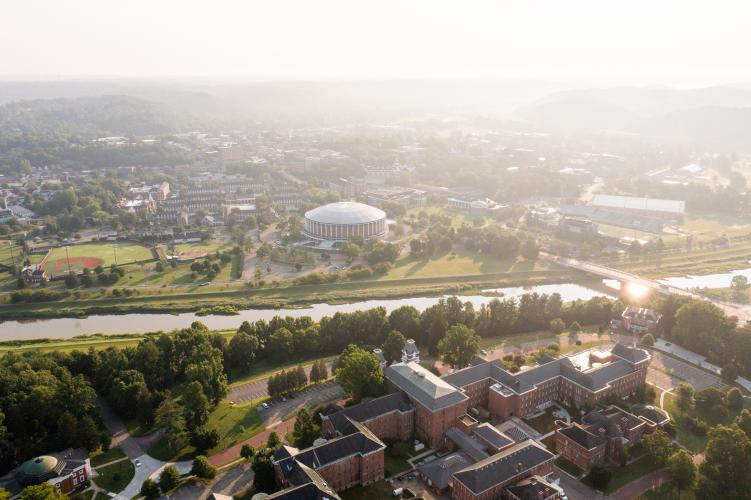
Note: This article was submitted by members of OHIO's Urban Planning Student Association
During our urban geography class in the College of Arts and Sciences at Ohio University, we talked about numerous urban occurrences like revitalization, gentrification, and the challenges of planning a fair and equitable city. The field trip to Columbus was a great way to put all of what we learned into perspective and observe city planning projects first-hand.
As the fastest growing city in the United States, Columbus has experienced explosive growth in the past 10 years, which has raised questions about topics such as housing affordability, equitable development, transit and mobility, and downtown reinvestment. This field trip, led by OHIO graduate Kyle May, touched on nearly every one of these topics as we explored Franklinton, Downtown, the Arena District and the Short North.
From the start of the trip, there was an immediate observable difference in the landscape of Franklinton. The side of the road that One Line Coffee was on consisted of new, modern buildings. The other side of road included an art studio and buildings that had older architecture styles. The students in our group questioned if any buildings will have to be renovated, torn down and rebuilt, or sold to keep up with the development happening around them.
Another area that stood out on our tour was Walnut Street, where developer Blake Compton, a founder at Compton Construction, bought houses on the street to with the goal of turning the area into an “equitable and bohemian village.” Compton explained to us that he knows every person who lives on Walnut Street and said that no residents are being blindsided or “kicked out” by this revitalization project. Compton plans for the houses on these streets to be turned into restaurants, theatres, and bars with residential apartments on the second floor of a few of the buildings. In theory, this project seems like a great idea, but we did leave with a few questions including if the new restaurants and other attractions on the street will raise the cost of living in the areas surrounding Walnut Street.
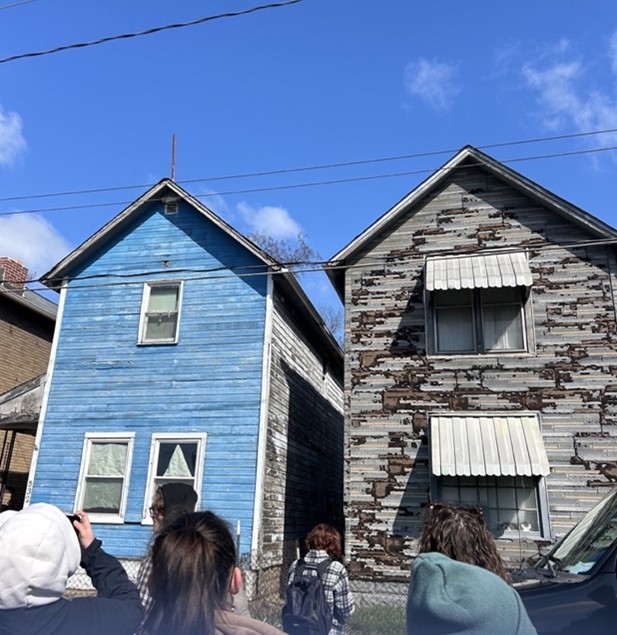
Our group was also fortunate to hear an excellent presentation by Jonathan Staker, a designer at MKSK. He talked about the creation of the new Columbus Crew stadium, and how the continued development in the Arena District will be designed to be accessible, encourage walking, and include mixed-use buildings and blocks. Sports centers can be big cultural attractors in cities, bringing in tourists, locals, and business.
For a growing city like Columbus to have a district dedicated to sports and entertainment is likely to be a successful venture, Staker said. He also brought up how sports centers often get abandoned when the season is over, so MKSK wants the stadium to be open for events outside of the season to keep the Arena District community active. Keeping the area busy year-round draws in more business opportunities and residents who crave living in a vibrant city.
For lunch, we headed to the North Market. To get to there from the Arena District, we walked over a path that was above a railroad. Columbus is one of the only major cities in the United States without a rail transportation system, but in the coming years, that will change.
We were told about the proposal for an Amtrak train that will have stations in Cincinnati, Columbus, and Cleveland. Columbus will likely benefit from being a part of the Amtrak rail networks. As for the North Market, it was filled with different vendors and small restaurants, many of them serving cultural foods from around the world.
During the final portion of our trip, we got to see highway caps in the Short North district. One of the highway caps was poorly designed, not pedestrian friendly, exposed the highway, and was very noisy. However, the other one, on High Street, worked very well.
The goal of this design was to encourage people to walk to High Street by making the path feel pedestrian-safe and secure by limiting access to views of the highway while crossing. It acts as a bridge, but if you were to walk along this part of High Street, you would not realize there is a freeway below. This is the way it should be. Highways are good transportation networks when they aren’t dividing or disrupting a city.
Girl saved from water during field trip in West Haven

WFSB Eyewitness News This morning 4:30 am - VOD

State police arrest East Lyme Police chief

People come from near, far to pay final respects to fallen trooper

Law enforcement paid respects at Trooper Pelletier’s funeral

Invasive flying spiders inch closer to Connecticut

IMAGES
VIDEO
COMMENTS
Top 10 Washington D.C. Field Trip Ideas; Field Trip Tips and Resources @poonerelray. There's a lot to do when you're organizing an off-site field trip. These resources are here to help. Preparing Parent Chaperones for a Field Trip; Free Printable Field Trip and School Permission Forms To Make Your Life Easier
A field trip is an educational excursion outside of the classroom environment. It is an opportunity for students to gain first-hand experience with the material they are learning in class. Field trips can take place at local attractions, museums, historic sites, nature centers, and more. They can also be conducted virtually, allowing students ...
Agricultural field trips are trips that are focused on the farm. Farm trips are great options for teaching kids all about the life cycles of plants, the types and effects of weather, where our food comes from, and more! Some of my favorite agricultural trips include fruit picking, petting zoos, and bee farms!
A field trip to a recreation center can also emphasize the importance of health and lifelong physical activity to students as they begin to have more control over their lives. 47. Volunteer at a Food Pantry. Field trip education can be about more than just the sciences; giving high school students opportunities to serve in the community can be ...
Here a 10 quick tips to help you and your students get the most out of your trip: Plan everything well in advance. Call to schedule the field trip or request an educational fee waiver, get a confirmation, and make necessary arrangements for school and parental permission and transportation. Plan the educational experiences and activities for ...
7. Teacher Essentials. A bag or backpack to carry all your stuff, a whistle, and contact numbers for the school secretary and principal nurse. 8. First Aid Kit. Carry a well-stocked first aid kit. Be prepared to handle common field trip injuries and ensure someone on the team is trained in basic first aid. 9.
Plan Your Schedule. Arrange Your Supervision. Create a Permission Form. Decide Who's Allowed To Go. Tie in Your Field Trip to Your Curriculum. These are the steps you will need to cover for your field trip plan. The order of these steps may be different for you, but be sure to think about all of these points. 1.
Search for class trips by geographic area, distance, and venue name or keyword. Find art museums, theater, dance, and music concert field trips. Find class trips to children's museums, petting zoos, and kids' shows. View history museums, government & civics, historic sites, living history museums, and multicultural field trip ideas.
Real World Learning. As teachers, a field trip is one of the best tools that we can use to provide every student with real-world experiences. Whether that's a trip to the local grocery store, waterfront park, a library, a museum, a theater, a community garden or a restaurant, each experience that a student participates in contributes to their understanding of the world.
A micro field trip to a nearby park or around school grounds, for example, can be a great opportunity to "enhance a unit on nature and wildlife while reinforcing vocabulary for senses, colors, and the concepts of quantity and size," Schwartz writes. "Afterwards, students might write descriptive stories set in the place you visited using ...
Coming up with fun, educational, affordable field trip ideas can be a challenge. But field trips offer great learning experiences that promote a sense of school pride and community within the student body. Even though schools operate on tight budgets, you can get creative and keep prioritizing field trips. Here are 35 field trip ideas broken up ...
Explicitly discuss field trip behavior rules with your students beforehand. Teach, model, and review appropriate field trip behavior with your students for at least a week before the big event. Drill into their heads that field trips are not the time or place to mess around and that any aberrant behavior will result in non-participation in any future field trips that school year.
Field trip. A field trip or excursion is a journey by a group of associated peers, such as co-workers or school students, to a place away from their normal environment for the purpose of education or leisure, either within their country or abroad. When done by school students as organised by their school administration, as it happens in several ...
A field trip is a visit to an area outside of the normal classroom where children can try new things, have different experiences, and learn valuable life lessons. A field trip can be to countless ...
The school field trip has a long history in American public education. For decades, students have piled into yellow buses to visit a variety of cultural institutions, including art, natural history, and science museums, as well as theaters, zoos, and historical sites. Schools gladly endured the expense and disruption of providing field trips ...
field trip: [noun] a visit (as to a factory, farm, or museum) made (as by students and a teacher) for purposes of firsthand observation.
The Field Trip 4 Brothers & Mom NH 48 4,000 Footers THRU HIKES: 8,000 miles Appalachian Trail 2021 Georgia-Maine Pacific Crest Trail 2022 Mexico-Canada Arizona Trail 2023 Mexico-Utah Continental ...
Field trip days are often the best days of the entire school year. Most students look forward to this day for weeks or months! Most students look forward to this day for weeks or months! That's why it is important that you mind some basic rules to keep the trip safe and enjoyable.
Museums, and many other kinds of field trips are multi-media experiences; therefore, learning is enriched and reinforced with superimposing sensory and intellectual inputs. Most museums are designed to stimulate curiosity and actively engage the visitor, so you have a very professional partner working with you to help your students learn.
The Field Museum's field trip experiences offer exciting, up-close exposure to science and social studies in a historic Chicago setting. Schools and community groups in Illinois serving Pre-K-12th grade students can register for a FREE field trip by completing this form at least 14 days before your desired visit date. There is no charge for ...
Many teachers feel that well-chosen field trip destinations are worth the difficulties they may create. The key is taking the time to plan each aspect as much as possible. Teachers should be proactive when thinking about and planning field trips. Students, on the other hand, may remember the experience of the school field trip as a highlight of ...
Journey with "Field Trip" host Lillian Cunningham to five of America's national parks: Yosemite, Everglades, Glacier, White Sands and Gates of the Arctic.
Jan. 28, 2021. Students in U.S. high schools can get free digital access to The New York Times until Sept. 1, 2021. " The Field Trip " is a 13-minute film featured in a special Op-Docs series ...
The field trip to Columbus was a great way to put all of what we learned into perspective and observe city planning projects first-hand. As the fastest growing city in the United States, Columbus has experienced explosive growth in the past 10 years, which has raised questions about topics such as housing affordability, equitable development ...
The MAGA field trip to San Salvador was, at least in part, just savvy diplomatic box-checking: If Trump wins in November, his government will have to work closely with Bukele on a handful of MAGA ...
A 13-year-old girl was saved from drowning on a field trip in West Haven, police confirmed. News. Moment of silence held for Trooper Pelletier. Updated: 4 hours ago.
3rd Grade and The Planetarium Field Trip Gocio Elementary School March 30, 2024 Third grade visited Riverview High School's planetarium and AquaDome facility for a fabulous program called "Stars to Starfish." The students started in the planetarium and watched a program created by Riverview students and staff. ...
The field trip aligns with NGSS listed below, highlighting Earth's complex systems within the mapped-out sanctuary. The diverse characteristics and adaptations of native (and non-native) species in Hawaiʻi are elaborated upon. Within the Nā Hopena A'o framework, our field trips align with the goals of strengthening students'
By Fiona Hernandez. ALBANY, N.Y. (June 5, 2024) - The College of Emergency Preparedness, Homeland Security and Cybersecurity (CEHC) organized a field trip earlier this month for Junior Reserve Officers' Training Corps, and Albany High School students to visit the Griffis Institute Air Force Research Laboratory in Rome, N.Y.. This field trip was organized through CEHC's Virtual Institute of ...
Field Museum Cicada Collecting Trip Clip: Season 2024 | 2m 5s Workers with the Field Museum collections team head to Champaign County, Illinois, to collect 13- and 17-year cicadas.